The History of Space Exploration
During the time that has passed since the launching of the first artificial satellite in 1957, astronauts have traveled to the moon, probes have explored the solar system, and instruments in space have discovered thousands of planets around other stars.
Earth Science, Astronomy, Social Studies, U.S. History, World History

Apollo 11 Astronauts on Moon
A less belligerent, but no less competitive, part of the Cold War was the space race. The Soviet Union bested its rival at nearly every turn, until the U.S. beat them to the finish line by landing astronauts on the moon.
NASA photograph
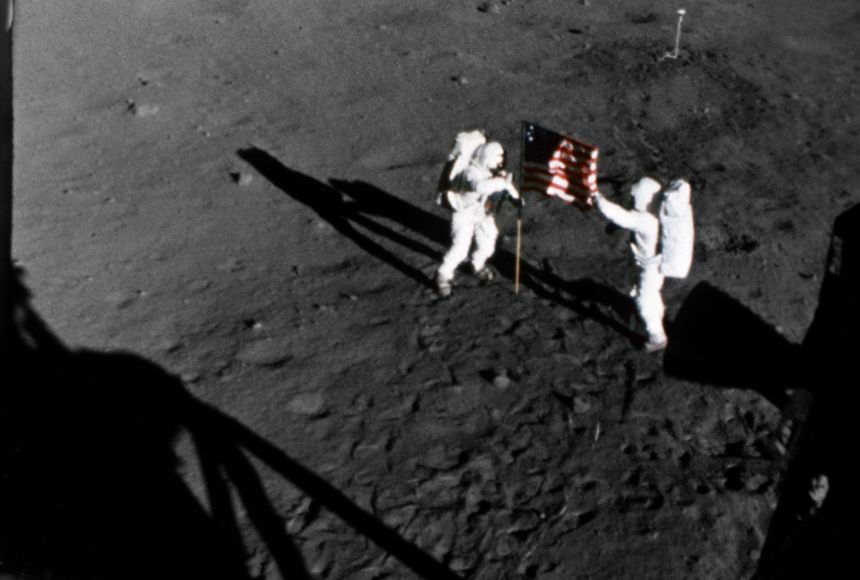
We human beings have been venturing into space since October 4, 1957, when the Union of Soviet Socialist Republics (U.S.S.R.) launched Sputnik, the first artificial satellite to orbit Earth. This happened during the period of political hostility between the Soviet Union and the United States known as the Cold War. For several years, the two superpowers had been competing to develop missiles, called intercontinental ballistic missiles (ICBMs), to carry nuclear weapons between continents. In the U.S.S.R., the rocket designer Sergei Korolev had developed the first ICBM, a rocket called the R7, which would begin the space race. This competition came to a head with the launch of Sputnik . Carried atop an R7 rocket, the Sputnik satellite was able to send out beeps from a radio transmitter. After reaching space, Sputnik orbited Earth once every 96 minutes. The radio beeps could be detected on the ground as the satellite passed overhead, so people all around the world knew that it was really in orbit. Realizing that the U.S.S.R. had capabilities that exceeded U.S. technologies that could endanger Americans, the United States grew worried. Then, a month later, on November 3, 1957, the Soviets achieved an even more impressive space venture. This was Sputnik II, a satellite that carried a living creature, a dog named Laika. Prior to the launch of Sputnik, the United States had been working on its own capability to launch a satellite. The United States made two failed attempts to launch a satellite into space before succeeding with a rocket that carried a satellite called Explorer on January 31, 1958. The team that achieved this first U.S. satellite launch consisted largely of German rocket engineers who had once developed ballistic missiles for Nazi Germany. Working for the U.S. Army at the Redstone Arsenal in Huntsville, Alabama, the German rocket engineers were led by Wernher von Braun and had developed the German V2 rocket into a more powerful rocket, called the Jupiter C, or Juno. Explorer carried several instruments into space for conducting science experiments. One instrument was a Geiger counter for detecting cosmic rays. This was for an experiment operated by researcher James Van Allen, which, together with measurements from later satellites, proved the existence of what are now called the Van Allen radiation belts around Earth. In 1958, space exploration activities in the United States were consolidated into a new government agency, the National Aeronautics and Space Administration (NASA). When it began operations in October of 1958, NASA absorbed what had been called the National Advisory Committee for Aeronautics (NACA), and several other research and military facilities, including the Army Ballistic Missile Agency (the Redstone Arsenal) in Huntsville. The first human in space was the Soviet cosmonaut Yuri Gagarin, who made one orbit around Earth on April 12, 1961, on a flight that lasted 108 minutes. A little more than three weeks later, NASA launched astronaut Alan Shepard into space, not on an orbital flight, but on a suborbital trajectory—a flight that goes into space but does not go all the way around Earth. Shepard’s suborbital flight lasted just over 15 minutes. Three weeks later, on May 25, President John F. Kennedy challenged the United States to an ambitious goal, declaring: “I believe that this nation should commit itself to achieving the goal, before the decade is out, of landing a man on the moon and returning him safely to Earth." In addition to launching the first artificial satellite, the first dog in space, and the first human in space, the Soviet Union achieved other space milestones ahead of the United States. These milestones included Luna 2, which became the first human-made object to hit the Moon in 1959. Soon after that, the U.S.S.R. launched Luna 3 . Less than four months after Gagarin’s flight in 1961, a second Soviet human mission orbited a cosmonaut around Earth for a full day. The U.S.S.R. also achieved the first spacewalk and launched the Vostok 6 mission, which made Valentina Tereshkova the first woman to travel to space. During the 1960s, NASA made progress toward President Kennedy’s goal of landing a human on the moon with a program called Project Gemini, in which astronauts tested technology needed for future flights to the moon, and tested their own ability to endure many days in spaceflight. Project Gemini was followed by Project Apollo, which took astronauts into orbit around the moon and to the lunar surface between 1968 and 1972. In 1969, on Apollo11, the United States sent the first astronauts to the Moon, and Neil Armstrong became the first human to set foot on its surface. During the landed missions, astronauts collected samples of rocks and lunar dust that scientists still study to learn about the moon. During the 1960s and 1970s, NASA also launched a series of space probes called Mariner, which studied Venus, Mars, and Mercury. Space stations marked the next phase of space exploration. The first space station in Earth orbit was the Soviet Salyut 1 station, which was launched in 1971. This was followed by NASA’s Skylab space station, the first orbital laboratory in which astronauts and scientists studied Earth and the effects of spaceflight on the human body. During the 1970s, NASA also carried out Project Viking in which two probes landed on Mars, took numerous photographs, examined the chemistry of the Martian surface environment, and tested the Martian dirt (called regolith ) for the presence of microorganisms . Since the Apollo lunar program ended in 1972, human space exploration has been limited to low-Earth orbit, where many countries participate and conduct research on the International Space Station. However, unpiloted probes have traveled throughout our solar system. In recent years, probes have made a range of discoveries, including that a moon of Jupiter, called Europa, and a moon of Saturn, called Enceladus, have oceans under their surface ice that scientists think may harbor life. Meanwhile, instruments in space, such as the Kepler Space Telescope , and instruments on the ground have discovered thousands of exoplanets , planets orbiting other stars. This era of exoplanet discovery began in 1995, and advanced technology now allows instruments in space to characterize the atmospheres of some of these exoplanets.
Articles & Profiles
Media credits.
The audio, illustrations, photos, and videos are credited beneath the media asset, except for promotional images, which generally link to another page that contains the media credit. The Rights Holder for media is the person or group credited.
Production Managers
Program specialists, last updated.
April 17, 2024
User Permissions
For information on user permissions, please read our Terms of Service. If you have questions about how to cite anything on our website in your project or classroom presentation, please contact your teacher. They will best know the preferred format. When you reach out to them, you will need the page title, URL, and the date you accessed the resource.
If a media asset is downloadable, a download button appears in the corner of the media viewer. If no button appears, you cannot download or save the media.
Text on this page is printable and can be used according to our Terms of Service .
Interactives
Any interactives on this page can only be played while you are visiting our website. You cannot download interactives.
Related Resources
History of Space Travel
Learn about the history of humans traveling into space.
The first earthling to orbit our planet was just two years old, plucked from the streets of Moscow barely more than a week before her historic launch. Her name was Laika. She was a terrier mutt and by all accounts a good dog. Her 1957 flight paved the way for space exploration back when scientists didn’t know if spaceflight was lethal for living things.
Humans are explorers. Since before the dawn of civilization, we’ve been lured over the horizon to find food or more space, to make a profit, or just to see what’s beyond those trees or mountains or oceans. Our ability to explore reached new heights—literally—in the last hundred years. Airplanes shortened distances, simplified travel, and showed us Earth from a new perspective. By the middle of the last century, we aimed even higher.
Our first steps into space began as a race between the United States and the former Soviet Union, rivals in a global struggle for power. Laika was followed into orbit four years later by the first human, Soviet Cosmonaut Yuri A. Gagarin. With Earth orbit achieved, we turned our sights on the moon. The United States landed two astronauts on its stark surface in 1969, and five more manned missions followed. The U.S.’s National Aeronautics and Space Administration (NASA) launched probes to study the solar system. Manned space stations began glittering in the sky. NASA developed reusable spacecraft—space shuttle orbiters—to ferry astronauts and satellites to orbit. Space-travel technology had advanced light-years in just three decades. Gagarin had to parachute from his spaceship after reentry from orbit. The space shuttle leaves orbit at 16,465 miles an hour (26,498 kilometers an hour) and glides to a stop on a runway without using an engine.
Space travel is nothing like in the movies. Getting from A to B requires complex calculations involving inertia and gravity—literally, rocket science—to "slingshot" from planet to planet (or moon) across the solar system. The Voyager mission of the 1970s took advantage of a rare alignment of Jupiter, Saturn, Uranus, and Neptune to shave off nearly 20 years of travel time. Space is also dangerous. More than 20 astronauts have died doing their job.
That hasn’t stopped people from signing up and blasting off. NASA’s shuttle program has ended, but private companies are readying their own space programs. A company called Planetary Resources plans to send robot astronauts to the Asteroid Belt to mine for precious metals. Another company named SpaceX is hoping to land civilian astronauts on Mars—the next human step into the solar system—in 20 years. NASA and other civilian companies are planning their own Mars missions. Maybe you’ll be a member of one? Don’t forget to bring your dog.
Space videos
Outer this world, planet earth, calling all earthlings, the milky way, shoot for the stars, what is hubble, how hubble works, read this next, total solar eclipse.
- African American Heroes
Katherine Johnson
- Action and Adventure
Space Explorer
- Terms of Use
- Privacy Policy
- Your California Privacy Rights
- Children's Online Privacy Policy
- Interest-Based Ads
- About Nielsen Measurement
- Do Not Sell My Info
- National Geographic
- National Geographic Education
- Shop Nat Geo
- Customer Service
- Manage Your Subscription
Copyright © 1996-2015 National Geographic Society Copyright © 2015-2024 National Geographic Partners, LLC. All rights reserved
- Search Please fill out this field.
- Manage Your Subscription
- Give a Gift Subscription
- Newsletters
- Sweepstakes
- Space Travel + Astronomy
The World's First Space Tourist Arrived at the International Space Station 20 Years Ago — Here's What He Says About the Trip
Dennis Tito, the world's first space tourist, spent eight days at the International Space Station in 2001.
Jessica Poitevien is an international storyteller and regular contributor to Travel + Leisure.
:max_bytes(150000):strip_icc():format(webp)/Jessica-Poitevien-2cbdf969757d480cb8b287cf97d1b882.jpg)
Space tourism once seemed like an idea for the distant future, but with the world's first space hotel set to open in 2027 and companies like SpaceX , Blue Origin, and Virgin Galactic vying to make space travel more broadly available, it seems like the future is now.
And it all started 20 years ago, when U.S. millionaire Dennis Tito became the world's first space tourist .
On April 30, 2001, Tito, then 60, accomplished what was a lifelong dream of his when he arrived at the International Space Station (ISS) on a Russian Soyuz rocket. The trip cost him $20 million, but reflecting on the moment two decades later, Tito still feels the experience was worth every penny.
"The pencils started floating in the air, and I could see the blackness of space and the curvature of the Earth," he told CNN Travel . "I was euphoric. I mean, it was the greatest moment of my life, to achieve a life objective, and I knew then that nothing could ever beat this."
Though Tito was working in finance when he launched into orbit, he had originally started his career in aeronautics and astronautics and kept his dream of going to space alive for several decades, CNN Travel reports. For Tito, outer space was something that had fascinated him since childhood.
According to CNN Travel , NASA was against the idea of sending civilians to space, so in 1991, Tito turned to the Soviet Union and began conversations about paying to join the country's space mission. Later in that decade, he resumed those conversations before his eventual flight in 2001.
"In the late '90s, the Russians were really hurting for funding of this space program and the bottom line was, I figured out, 'Huh, maybe I could get involved with the Russians,'" he told CNN Travel .
Eventually, on April 28, 2001, Tito took off on his journey to the ISS with two Russian cosmonauts by his side. They arrived at the station two days later.
"I just enjoyed looking at the window, videoing the Earth, the portholes, the station. It was just wonderful," Tito told CNN Travel . "It just was — whatever I had expected, the best I had expected times 10. It was the best experience of my whole life, those eight days."
Though only a handful of other ultra-wealthy people have managed to pay their way onto a space mission since Tito first paved the way, he is keeping an eye on the industry's development, hoping more people will get to experience what he did.
"I just wish them the best," he said to CNN Travel . "I am hopeful they will have the wonderful experience that I had."
Jessica Poitevien is a Travel + Leisure contributor currently based in South Florida, but she's always on the lookout for her next adventure. Besides traveling, she loves baking, talking to strangers, and taking long walks on the beach. Follow her adventures on Instagram .
Related Articles
- History Classics
- Your Profile
- Find History on Facebook (Opens in a new window)
- Find History on Twitter (Opens in a new window)
- Find History on YouTube (Opens in a new window)
- Find History on Instagram (Opens in a new window)
- Find History on TikTok (Opens in a new window)
- This Day In History
- History Podcasts
- History Vault
What was the first animal in space?
By: Nate Barksdale
Updated: September 14, 2023 | Original: April 29, 2015

Though far less famous than later non-human astronauts, the first animals in space were a group of fruit flies, launched to an altitude of 42 miles at the tip of a V-2 rocket, developed and used by the Germans during World War II and later by American military scientists on February 20, 1947. The flies, members of the often-studied species Drosophila melanogaster, made their journey alongside packets of rye and cotton seeds as part of an experiment to study the effects of cosmic rays on living organisms. The flies’ container parachuted to the ground, and the insects were retrieved in perfect health.
The first vertebrates sent into space were a series of ill-fated monkeys and mice launched between 1948 and 1951 by American researchers. On June 14, 1949, a Rhesus monkey named Albert II blasted to an altitude of 83 miles in a V-2, surviving the flight but dying on impact. A year later, the U.S. launched a mouse and photographed its behavior in a weightless state, although it too was not recovered alive.
The Soviet Union had better luck, launching (to 62 miles) and recovering a pair of dogs, Tsygan and Dezik, on July 22, 1951. Two months later, the U.S. launched and retrieved an anesthetized monkey named Yorick along with 11 mice. Alas, poor Yorick died after his capsule overheated in the New Mexico sun while awaiting recovery, though nine of the mice survived.
Six years later, the Soviet Sputnik II probe carried the first animal into orbit, a former stray dog named Kudryavka (“curly”) but later known to the world as Laika (“barker”). She died in her orbiting capsule—no provisions had been made to return her to earth alive—sparking debate in the West over the ethics of sacrificing animals to advance science.
In 1960, the Soviet Sputnik 5, carrying two dogs as part of its animal-laden cargo, was successfully recovered after orbit. The following year, despite Cold War tensions, Soviet Premier Nikita Khrushchev gave the puppy of one of Sputnik 5’s dogs to young Caroline Kennedy. Pushinka, as she was known, eventually gave birth to four puppies of her own, which President John F. Kennedy referred to as the “pupniks.”

HISTORY Vault: Christa McAuliffe: Teacher in Space
Portrait of the teacher who died in the tragic explosion of the space shuttle Challenger in 1986. Includes interviews with her parents and students.

Sign up for Inside History
Get HISTORY’s most fascinating stories delivered to your inbox three times a week.
By submitting your information, you agree to receive emails from HISTORY and A+E Networks. You can opt out at any time. You must be 16 years or older and a resident of the United States.
More details : Privacy Notice | Terms of Use | Contact Us

Suggested Searches
- Climate Change
- Expedition 64
- Mars perseverance
- SpaceX Crew-2
- International Space Station
- View All Topics A-Z
Humans in Space
Earth & climate, the solar system, the universe, aeronautics, learning resources, news & events.
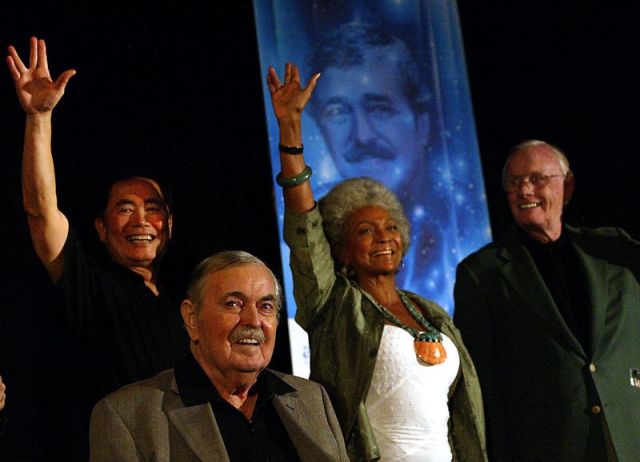
55 Years Ago: Star Trek Final Episode Airs, Relationship with NASA Endures

Space Station Research Advances NASA’s Plans to Explore the Moon, Mars

What’s Up: June 2024 Skywatching Tips from NASA
- Search All NASA Missions
- A to Z List of Missions
- Upcoming Launches and Landings
- Spaceships and Rockets
- Communicating with Missions
- James Webb Space Telescope
- Hubble Space Telescope
- Why Go to Space
- Commercial Space
- Destinations
- Living in Space
- Explore Earth Science
- Earth, Our Planet
- Earth Science in Action
- Earth Multimedia
- Earth Science Researchers
- Pluto & Dwarf Planets
- Asteroids, Comets & Meteors
- The Kuiper Belt
- The Oort Cloud
- Skywatching
- The Search for Life in the Universe
- Black Holes
- The Big Bang
- Dark Energy & Dark Matter
- Earth Science
- Planetary Science
- Astrophysics & Space Science
- The Sun & Heliophysics
- Biological & Physical Sciences
- Lunar Science
- Citizen Science
- Astromaterials
- Aeronautics Research
- Human Space Travel Research
- Science in the Air
- NASA Aircraft
- Flight Innovation
- Supersonic Flight
- Air Traffic Solutions
- Green Aviation Tech
- Drones & You
- Technology Transfer & Spinoffs
- Space Travel Technology
- Technology Living in Space
- Manufacturing and Materials
- Science Instruments
- For Kids and Students
- For Educators
- For Colleges and Universities
- For Professionals
- Science for Everyone
- Requests for Exhibits, Artifacts, or Speakers
- STEM Engagement at NASA
- NASA's Impacts
- Centers and Facilities
- Directorates
- Organizations
- People of NASA
- Internships
- Our History
- Doing Business with NASA
- Get Involved
- Aeronáutica
- Ciencias Terrestres
- Sistema Solar
- All NASA News
- Video Series on NASA+
- Newsletters
- Social Media
- Media Resources
- Upcoming Launches & Landings
- Virtual Events
- Sounds and Ringtones
- Interactives
- STEM Multimedia
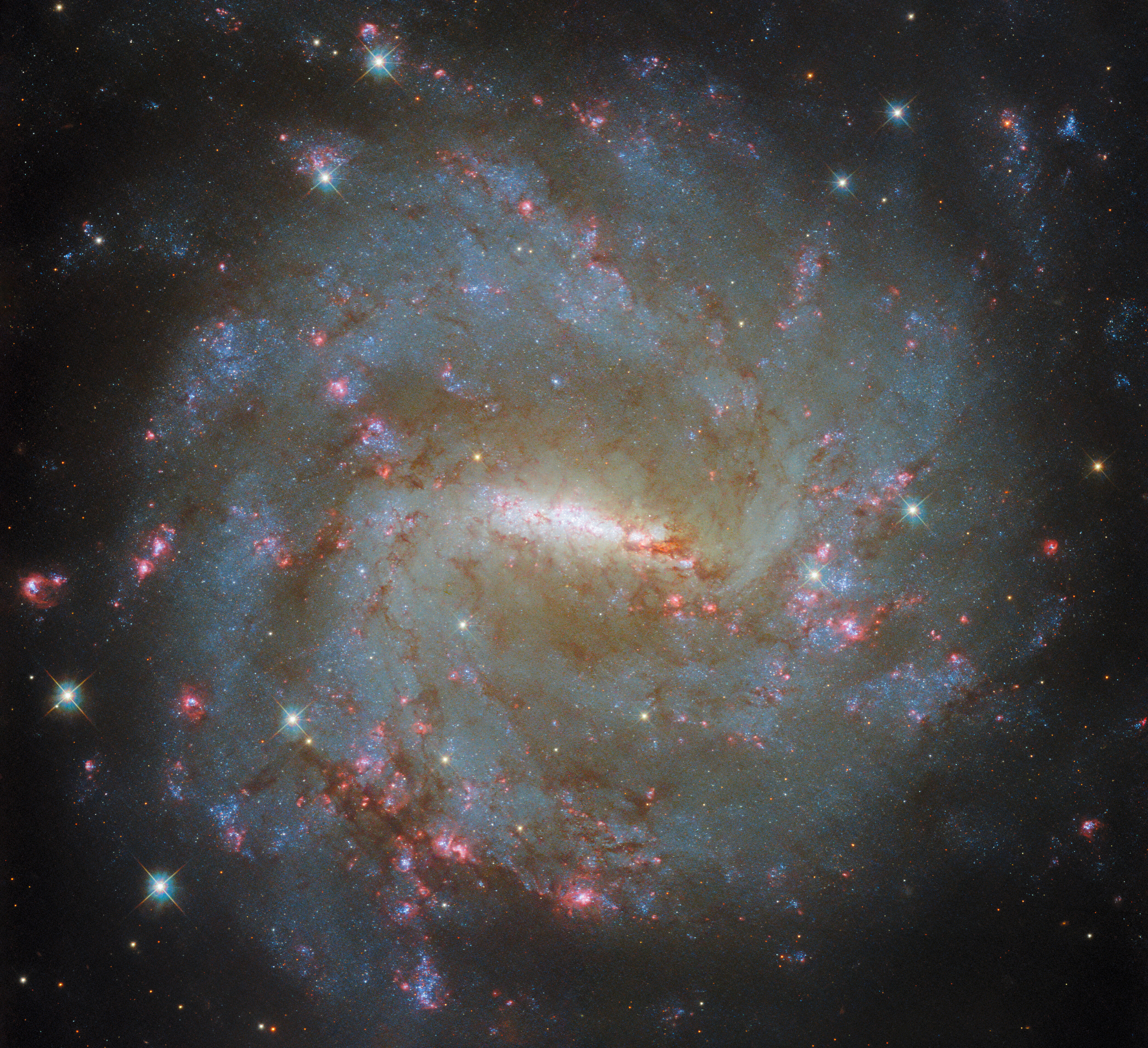
Hubble Examines a Barred Spiral’s Light

Webb Finds Plethora of Carbon Molecules Around Young Star

NASA Scientists Take to the Seas to Study Air Quality

NASA Astronauts Practice Next Giant Leap for Artemis

Former Astronaut David R. Scott

NASA Mission Flies Over Arctic to Study Sea Ice Melt Causes

Twin NASA Satellites Ready to Help Gauge Earth’s Energy Balance

Solid State Quantum Magnetometers—Seeking out water worlds from the quantum world

C.12 Planetary Instrument Concepts for the Advancement of Solar System Observations POC Change

NASA to Change How It Points Hubble Space Telescope

B.10 Heliophysics Flight Opportunities Studies Correction

ARMD Solicitations

Winners Announced in Gateways to Blue Skies Aeronautics Competition

NASA, Industry to Start Designing More Sustainable Jet Engine Core

Tech Today: Measuring the Buzz, Hum, and Rattle

Artemis Generation Shines During NASA’s 2024 Lunabotics Challenge

Ames Science Directorate’s Stars of the Month, June 2024

Ted Michalek: Engineering from Apollo to Artemis
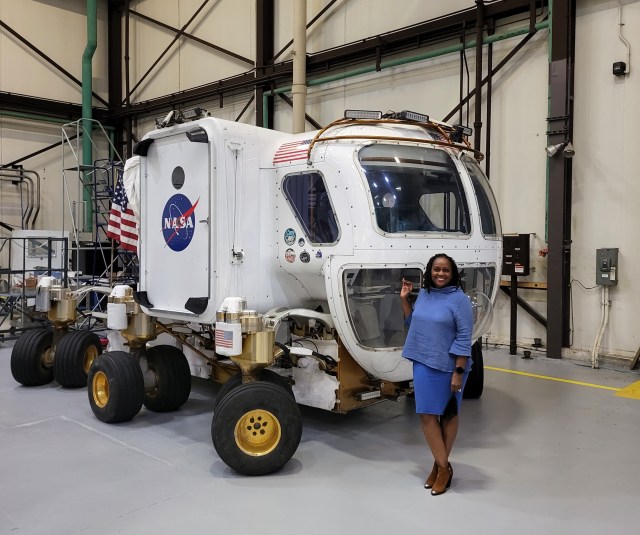
Aerospace Trailblazer: Shirley Holland-Hunt’s Visionary Leadership Transforms Space Exploration

Diez maneras en que los estudiantes pueden prepararse para ser astronautas

Astronauta de la NASA Marcos Berríos

Resultados científicos revolucionarios en la estación espacial de 2023
A brief history of animals in space.
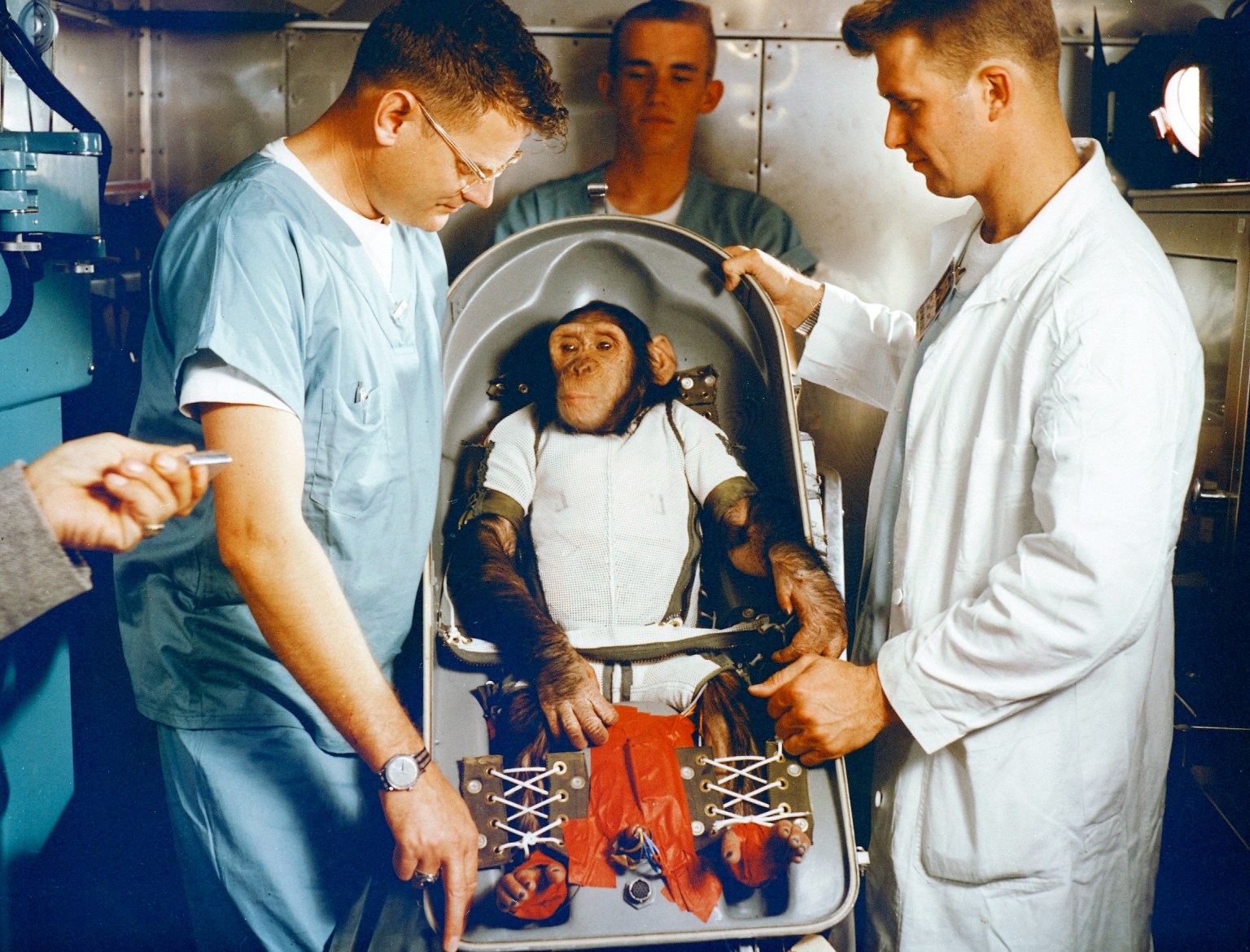
NASA Communications
Before humans actually went into space, one of the prevailing theories of the perils of space flight was that humans might not be able to survive long periods of weightlessness. For several years, there had been a serious debate among scientists about the effects of prolonged weightlessness. American and Russian scientists utilized animals—mainly monkeys, chimps and dogs—in order to test each country’s ability to launch a living organism into space and bring it back alive and unharmed.
On June 11, 1948, a V-2 Blossom launched into space from White Sands, New Mexico carrying Albert I, a rhesus monkey. Lack of fanfare and documentation made Albert an unsung hero of animal astronauts. On June 14, 1949, a second V-2 flight carrying a live Air Force Aeromedical Laboratory monkey, Albert II, attained an altitude of 83 miles. The monkey died on impact. On August 31, 1950, another V-2 was launched and carried an unanaesthetized mouse that was photographed in flight and did not survive impact. On December 12, 1949, the last V-2 monkey flight was launched at White Sands. Albert IV, a rhesus monkey attached to monitoring instruments, was the payload. It was a successful flight, with no ill effects on the monkey until impact, when it died.
On September 20, 1951, a monkey named Yorick and 11 mice were recovered after an Aerobee missile flight of 236,000 feet at Holloman Air Force Base, New Mexico. Yorick got a fair amount of press as the first monkey to live through a space flight.
On May 22, 1952, two Philippine monkeys, Patricia and Mike, were enclosed in an Aerobee nose section at Holloman Air Force Base. Patricia was placed in a seated position and Mike in a prone position to determine differences in the effects of rapid acceleration. Fired 36 miles up at a speed of 2000 mph, these two monkeys were the first primates to reach such a high altitude. Also on this flight were two white mice, Mildred and Albert. They were inside a slowly rotating drum where they could “float” during the period of weightlessness. The section containing the animals was recovered safely from the upper atmosphere by parachute. Patricia died of natural causes about two years later and Mike died in 1967, both at the National Zoological Park in Washington, DC.
The Soviets kept close tabs on what the U.S. was doing with their V-2 and Aerobee missile projects during the early 1950’s. Basing their experiments on American biomedical research, Soviet rocket pioneer Sergei Korolev, his biomedical expert Vladimir Yazdovsky, and a small team used mice, rats and rabbits as one-way passengers for their initial tests. They needed to gather data to design a cabin to carry a human being into space. Eventually they chose small dogs for this phase of testing. Dogs were chosen over monkeys because it was felt that they would be less fidgety in flight. A test with two dogs would allow for more accurate results. They chose females because of the relative ease of controlling waste.
Between 1951 and 1952, the Soviet R-1 series rockets carried nine dogs altogether, with three dogs flying twice. Each flight carried a pair of dogs in hermetically sealed containers that were recovered by parachute. Of these early space-bound hounds, a few have been remembered by name.
On August 15, 1951, Dezik and Tsygan (“Gypsy”) were launched. These two were the first canine suborbital astronauts. They were successfully retrieved. In early September 1951, Dezik and Lisa were launched. This second early Russian dog flight was unsuccessful. The dogs died but a data recorder survived. Korolev was devastated by the loss of these dogs. Shortly afterwards, Smelaya (“Bold”) and Malyshka (“Little One”) were launched. Smelaya ran off the day before the launch. The crew was worried that wolves that lived nearby would eat her. She returned a day later and the test flight resumed successfully. The fourth test launch was a failure, with two dog fatalities. However, in the same month, the fifth test launch of two dogs was successful. On September 15, 1951, the sixth of the two-dog launches occurred. One of the two dogs, Bobik, escaped and a replacement was found near the local canteen. She was a mutt, given the name ZIB, the Russian acronym for “Substitute for Missing Dog Bobik.” The two dogs reached 100 kilometers and returned successfully. Other dogs associated with this series of flights included Albina (“Whitey”), Dymka (“Smoky”), Modnista (“Fashionable”), and Kozyavka (“Gnat”).
On November 3, 1957, Sputnik 2 blasted into Earth orbit with a dog named Laika aboard. Laika, which is Russian for “Husky” or “Barker,” had the real name of Kudryavka (“Little Curly”). In the U.S. she was eventually dubbed “Muttnik.” Laika was a small, stray mongrel picked up from the street. She was hastily trained and put aboard in a metal carrier under the second Sputnik sphere. There was no time to work out any reentry strategy and Laika expired after a few hours. Sputnik 2 finally burned up in the outer atmosphere in April 1958.
Back in the U.S., on April 23, 1958 a mouse was launched in a Thor-Able “Reentry 1” test as the first launch in the Mouse in Able (MIA) project. It was lost when the rocket was destroyed after launch from Cape Canaveral. The second launch in the series was MIA-2, or Laska, in a Thor-Able “Reentry 2” test on July 9, 1958. Laska endured 60G acceleration and 45 minutes of weightlessness before perishing. Wilkie, the third mouse in the MIA series, was lost at sea after the flight from Cape Canaveral on July 23, 1958. Fourteen mice were lost when the Jupiter rocket they were aboard was destroyed after launch from Cape Canaveral on September 16, 1959.
Gordo, a squirrel monkey, was catapulted 600 miles high in a Jupiter rocket, also on December 13, 1958, one year after the Soviets launched Laika. Gordo’s capsule was never found in the Atlantic Ocean. He died on splashdown when a flotation mechanism failed, but Navy doctors said signals on his respiration and heartbeat proved humans could withstand a similar trip.
Able, an American-born rhesus monkey, and Baker, a South American squirrel monkey, followed on May 28, 1959, aboard an Army Jupiter missile. Launched in the nose cone, the two animals were carried to a 300-mile altitude, and both were recovered unharmed. However, Able died June 1 on the operating table from effects of anesthesia, as doctors were about to remove an electrode from under her skin. Baker died of kidney failure in 1984 at age 27.
Four black mice were launched on June 3, 1959, on Discoverer 3, part of the Corona program of U.S. spy satellites, which was launched from Vandenberg Air Force Base on a Thor Agena A rocket. This was the only Discoverer flight with an animal payload. The mice died when the Agena upper stage fired downward, driving the vehicle into the Pacific Ocean. The first try at launch was scrubbed after the telemetry indicated no sign of activity in the capsule and the first crew of four black mice was found dead. The mouse cages had been sprayed with krylon to cover rough edges, and the mice had found the krylon tastier than their formula and overdosed on it. The second try at launch with a backup mouse crew was halted when the humidity sensor in the capsule indicated 100-percent humidity. The capsule was opened up and it was discovered that the sensor was located underneath one of the mouse cages; it was unable to distinguish the difference between water and mouse urine. After the sensor was dried out, the launch proceeded.
Sam, a rhesus monkey, was one of the most well known monkeys of the space program. His name was an acronym for the U.S. Air Force S chool of A viation M edicine at Brooks Air Force Base, Texas. He was launched on December 4, 1959, housed in a cylindrical capsule within the Mercury spacecraft atop a Little Joe rocket in order to test the launch escape system (LES). Approximately one minute into the flight, traveling at a speed of 3685 mph, the Mercury capsule aborted from the Little Joe launch vehicle. After attaining an altitude of 51 miles, the spacecraft landed safely in the Atlantic Ocean. Sam was recovered, several hours later, with no ill effects from his journey. He was later returned to the colony in which he trained, where he died in November 1982 and his remains were cremated.
Miss Sam, another rhesus monkey and Sam’s mate, was launched on January 21, 1960, for another test of the LES. The Mercury capsule attained a velocity of 1800 mph and an altitude of 9 miles. After landing in the Atlantic Ocean 10.8 miles downrange from the launch site, Miss Sam was also retrieved in overall good condition. She was also returned to her training colony until her death on an unknown date.
In the Soviet Union, meanwhile, testing was also taking place on more dogs. On July 28, 1960, Bars (“Panther” or “Lynx”) and Lisichka (“Little Fox”) were launched on a Korabl Sputnik, a prototype of the Vostok manned spacecraft. The booster exploded on launch, killing the two dogs. On August 19, 1960, Belka (“Squirrel”) and Strelka (“Little Arrow”) were launched on Sputnik 5 or Korabl Sputnik 2, along with a gray rabbit, 40 mice, 2 rats, and 15 flasks of fruit flies and plants. Strelka later gave birth to a litter of six puppies one of which was given to JFK as a gift for his children. Pchelka (“Little Bee”) and Muska (“Little Fly”) were launched onboard Sputnik 6 or Korabl Sputnik 3 on December 1, 1960 along with mice, insects, and plants. The capsule and animals burned up on re-entry. On December 22, 1960, soviet scientists attempted to launch Damka (“Little Lady”) and Krasavka (“Beauty”) on a Korabl Sputnik. However, the upper rocket stage failed and the launch was aborted. The dogs were safely recovered after their unplanned suborbital flight. On March 9, 1961, another Russian dog, Chernushka (“Blackie”) was launched on Sputnik 9 or Korabl Sputnik 4. Chernushka was accompanied into space with a dummy cosmonaut, some mice, and a guinea pig. Zvezdochka (“Little Star”) was launched onboard Sputnik 10 or Korabl Sputnik 5 on March 25, 1961. The dog went up with simulated cosmonaut “Ivan Ivanovich” and successfully tested the spacecraft’s structure and systems.
On January 31, 1961, Ham, whose name was an acronym for H olloman A ero M ed, became the first chimpanzee in space, aboard the Mercury Redstone rocket on a sub-orbital flight very similar to Alan Shepard’s. Ham was brought from the French Camaroons, West Africa, where he was born July 1957, to Holloman Air Force Base in New Mexico in 1959. The original flight plan called for an altitude of 115 miles and speeds ranging up to 4400 mph. However, due to technical problems, the spacecraft carrying Ham reached an altitude of 157 miles and a speed of 5857 mph and landed 422 miles downrange rather than the anticipated 290 miles. Ham performed well during his flight and splashed down in the Atlantic Ocean 60 miles from the recovery ship. He experienced a total of 6.6 minutes of weightlessness during a 16.5-minute flight. A post-flight medical examination found Ham to be slightly fatigued and dehydrated, but in good shape otherwise. Ham’s mission paved the way for the successful launch of America’s first human astronaut, Alan B. Shepard, Jr., on May 5, 1961. Upon the completion of a thorough medical examination, Ham was placed on display at the Washington Zoo in 1963 where he lived alone until September 25, 1980. He then was moved to the North Carolina Zoological Park in Asheboro. Upon his death on January 17, 1983, Ham’s skeleton would be retained for ongoing examination by the Armed Forces Institute of Pathology. His other remains were respectfully laid to rest in front of the International Space Hall of Fame in Alamogordo, New Mexico.
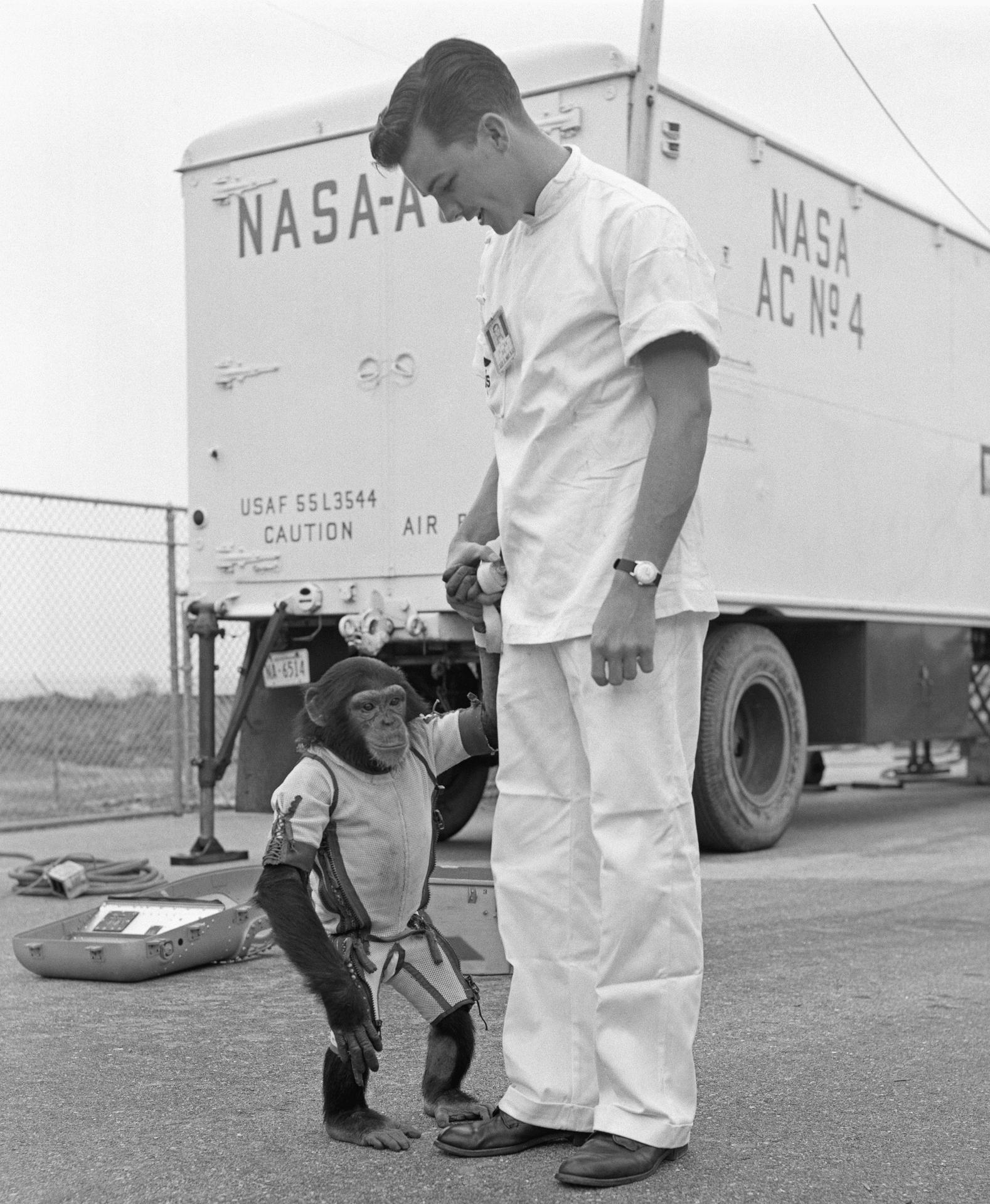
Goliath, a one-and-a-half-pound squirrel monkey, was launched in an Air Force Atlas E rocket on November 10, 1961. The SPURT (Small Primate Unrestrained Test) monkey was killed when the rocket was destroyed 35 seconds after launch from Cape Canaveral.
Enos became the first chimp to orbit the earth on November 29, 1961, aboard a Mercury Atlas rocket. Although the mission plan originally called for three orbits, due to a malfunctioning thruster and other technical difficulties, flight controllers were forced to terminate Enos’ flight after two orbits. Enos landed in the recovery area and was picked up 75 minutes after splashdown. He was found to be in good overall condition and both he and the Mercury spacecraft performed well. His mission concluded the testing for a human orbital flight, achieved by John Glenn on February 20, 1962. Enos died at Holloman Air Force Base of a non-space related case of dysentery 11 months after his flight.
On October 18, 1963, French scientists launched the first cat into space on a Veronique AGI sounding rocket No. 47. The cat, named Félicette, was successfully retrieved after a parachute descent, but a second feline flight on October 24 ran into difficulties that prevented recovery.
Back in the Soviet Union, the dogs Veterok (“Breeze”) and Ugoyok (“Little Piece Of Coal”) were launched aboard Kosmos 110 by the Soviet Union on February 22, 1966. The flight was an evaluation of prolonged effects during space travel of radiation from the Van Allen Belts on animals. Twenty-one days in space still stand as a canine record and was only surpassed by humans in June 1974 with the flight of Skylab 2.
The year 1968 saw the U.S.S.R. turn once again to the animal kingdom for the first passengers of their new, manned moon ship. The first successful Zond (“probe”) launch was on September 15, 1968, when Zond 5 was launched. A biological payload of turtles, wine flies, mealworms, plants, seeds, bacteria, and other living matter was included in the flight. On September 18, 1968, the spacecraft flew around the Moon. On September 21, 1968, the reentry capsule entered the earth’s atmosphere, braked aerodynamically, and deployed parachutes at 7 km. The capsule splashed down in the Indian Ocean and was successfully recovered, but a failure of the reentry guidance system subjected the biological specimens to a ballistic 20G reentry. Zond 6 was launched on a lunar flyby mission on November 10, 1968. The spacecraft carried a biological payload similar to Zond 5. Zond 6 flew around the Moon on November 14, 1968. Unfortunately, the spacecraft lost a gasket on the return flight resulting in the loss of cabin atmosphere and destruction of the biological specimens.
From 1966 to 1969, the U.S. launched three missions in the Biosatellite series. A total of six flights were planned. The first mission in the Biosatellite series, Biosatellite I, was launched on December 14, 1966, from Cape Kennedy by a Delta rocket. The scientific payload, consisting of 13 select biology and radiation experiments, was exposed to microgravity during 45 hours of Earth-orbital flight. Experimental biology packages on the spacecraft contained a variety of specimens, including insects, frog eggs, microorganisms, and plants. Reentry into the Earth’s atmosphere was not achieved because the retrorocket failed to ignite and the biosatellite was never recovered. Although not all the mission objectives were accomplished, the Biosatellite I experience provided technical confidence in the program because of excellent performance in most other areas.
Improvements were made in hardware, prelaunch tests, and procedures before Biosatellite II was launched on September 7, 1967 from Cape Kennedy. The planned three-day mission was recalled early because of the threat of a tropical storm in the recovery area, and because of a communication problem between the spacecraft and the tracking systems. It carried a biological payload similar to Biosatellite I. The primary objective of the Biosatellite II mission was to determine if organisms were more, or less, sensitive to ionizing radiation in microgravity than on Earth. To study this question, an artificial source of radiation (Strontium 85) was supplied to a group of experiments mounted in the forward part of the spacecraft.
The last spacecraft in the series, Biosatellite III, was launched on June 28, 1969. On board was a single, male, pig-tailed monkey ( Macaca nemestrina ) named Bonnie, weighing 6 kg, for a planned 30-day mission. The mission objective was to investigate the effect of space flight on brain states, behavioral performance, cardiovascular status, fluid and electrolyte balance, and metabolic state. However, after just under nine days in orbit, the mission was terminated because of the subject’s deteriorating health. Bonnie died eight hours after he was recovered due to a heart attack brought about by dehydration.
After the manned lunar landing of Apollo 11, the role of animals was limited to the status of “biological payload.” The range of species broadened to include rabbits, turtles, insects, spiders, fish, jellyfish, amoebae, and algae. Although they were still used in tests dealing with long-range health effects in space, tissue development, and mating in a zero-g environment, etc., animals no longer made the front pages. One exception to this was one of the last Apollo flights, Skylab 3, which launched on July 28, 1973. On board were Anita and Arabella, two common Cross spiders. Tests were set up to record the spiders’ successful attempts to spin webs in space.
From 1973 to 1996, Russia, or its predecessor, the Soviet Union, launched a series of life sciences satellites called Bion. Research partners have included Austria, Bulgaria, Canada, China, the Commonwealth of Independent States, Czechoslovakia, East Germany, the European Space Agency, France, Germany, Hungary, Lithuania, Poland, Romania, Ukraine, and the United States. The Bion spacecraft is a modified Vostok type and is launched on a Soyuz rocket from the Plesetsk Kosmodrome in northern Russia.
Bion missions are typically put under the Kosmos umbrella name, used for a variety of different satellites including spy satellites. The first Bion launch was Kosmos 605 launched on October 31, 1973. The satellite carried tortoises, rats, insects, and fungi on a 22-day mission. Other missions have also carried plants, mold, quail eggs, fish, newts, frogs, cells, and seeds.
Starting with Bion 6 (Kosmos 1514), these missions have carried pairs of monkeys. Bion 6/Kosmos 1514 was launched December 14, 1983, and carried the monkeys Abrek and Bion on a five-day flight. Bion 7/Kosmos 1667 was launched July 10, 1985 and carried the monkeys Verny (“Faithful”) and Gordy (“Proud”) on a seven-day flight. Bion 8/Kosmos 1887 was launched September 29, 1987, and carried the monkeys Yerosha (“Drowsy”) and Dryoma (“Shaggy”) on a 13-day flight. Yerosha partially freed himself from his restraints and explored his orbital cage during the mission. On reentry, Bion 8 missed its touchdown point by 1850 miles, resulting in the death of several fish on board due to the frigid weather. Bion 9/Kosmos 2044 was launched September 15, 1989, and carried the monkeys Zhakonya and Zabiyaka (“Troublemaker”) on a 14-day flight. Temperature problems onboard resulted in the loss of ant and earthworm experiments.
Bion 10/Kosmos 2229 was launched December 29, 1992, and carried the monkeys Krosh (“Tiny”) and Ivasha on a 12-day flight. Bion 10 was recovered two days early due to thermal control problems that resulted in unacceptably high onboard temperatures. Seven of fifteen tadpoles onboard died as a result of the high temperatures. Both monkeys were treated for dehydration and recovered. One monkey also suffered weight loss when he went without food for three days. Bion 11 was launched December 24, 1996, and carried the monkeys Lapik and Multik (“Cartoon”) on a 14-day flight. Tragically, Multik died the day after the capsule recovery during his post-landing medical operation and checkup. Multik’s death raised new questions regarding the ethics of using animals for research. NASA has dropped out of participation in a planned Bion 12 mission.
From 1983 to the present day, the Space Shuttle has flown over two dozen Spacelab experimental packages in its payload bay. Life-science Spacelab missions have included experiments involving the human astronauts as well as the animals and insects carried on these missions. STS-51-B (Spacelab-3) launched April 29, 1985. STS-61-A (Spacelab-D1) launched October 30, 1985. STS-40 (Spacelab Life Sciences 1 SLS-1) launched June 5, 1991. STS-42 (International Microgravity Laboratory-1 IML-1) launched January 22, 1992. STS-47 (Spacelab-J), a joint venture between NASA and the National Space Development Agency of Japan (NASDA) launched September 12, 1992. STS-65 (IML-2) launched July 8, 1994. A biological payload record was set on April 17, 1998, when over two thousand creatures joined the seven-member crew of the shuttle Columbia (STS-90) for a sixteen-day mission of intensive neurological testing (NEUROLAB).Over the past 50 years, American and Soviet scientists have utilized the animal world for testing. Despite losses, these animals have taught the scientists a tremendous amount more than could have been learned without them. Without animal testing in the early days of the human space program, the Soviet and American programs could have suffered great losses of human life. These animals performed a service to their respective countries that no human could or would have performed. They gave their lives and/or their service in the name of technological advancement, paving the way for humanity’s many forays into space.
By Tara Gray, 1998
Explore More

25 Years Ago: STS-96 Resupplies the Space Station

15 Years Ago: First Time all Partners Represented aboard the International Space Station
Discover more topics from nasa.
NASA History

History Publications and Resources
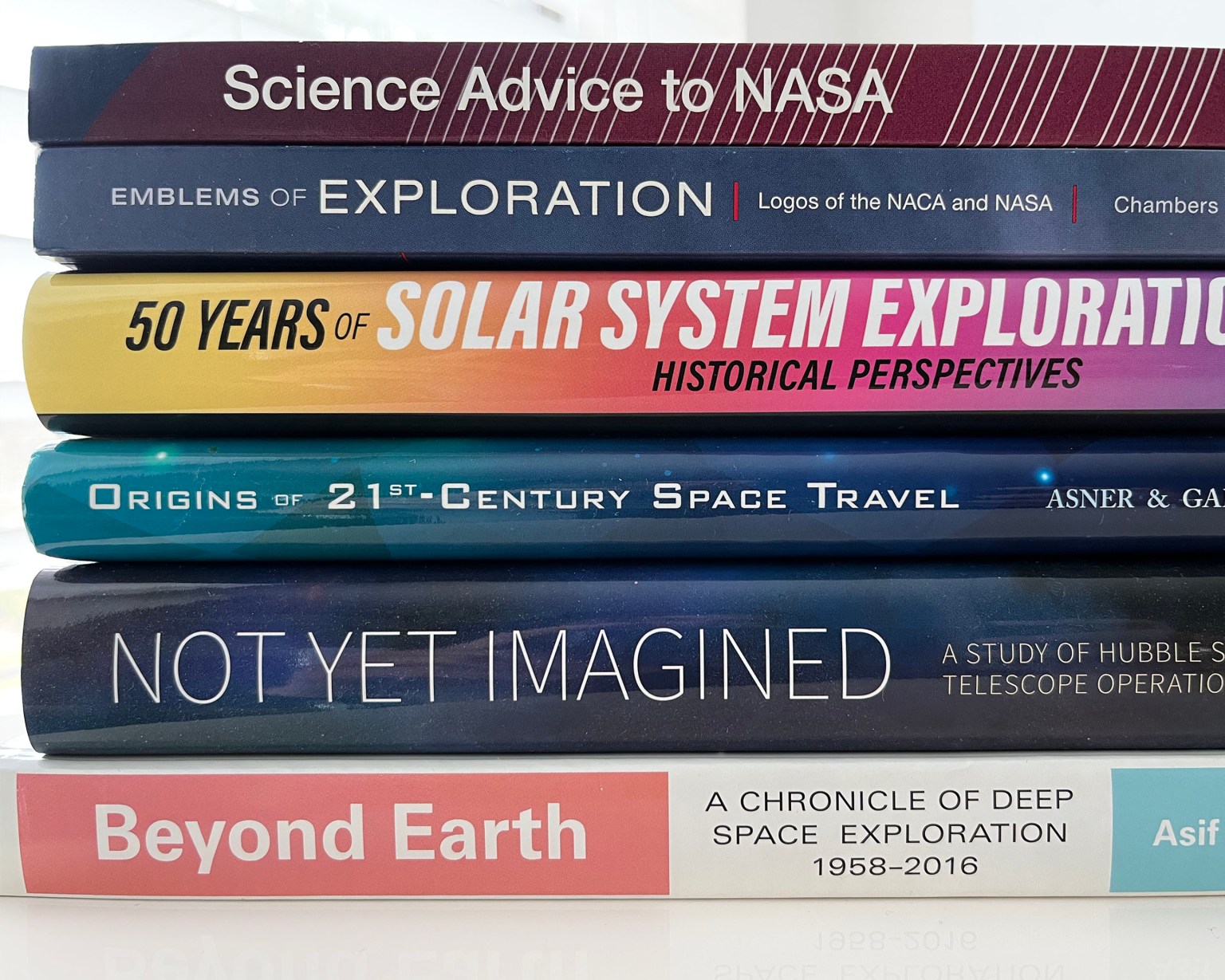
NASA Oral Histories
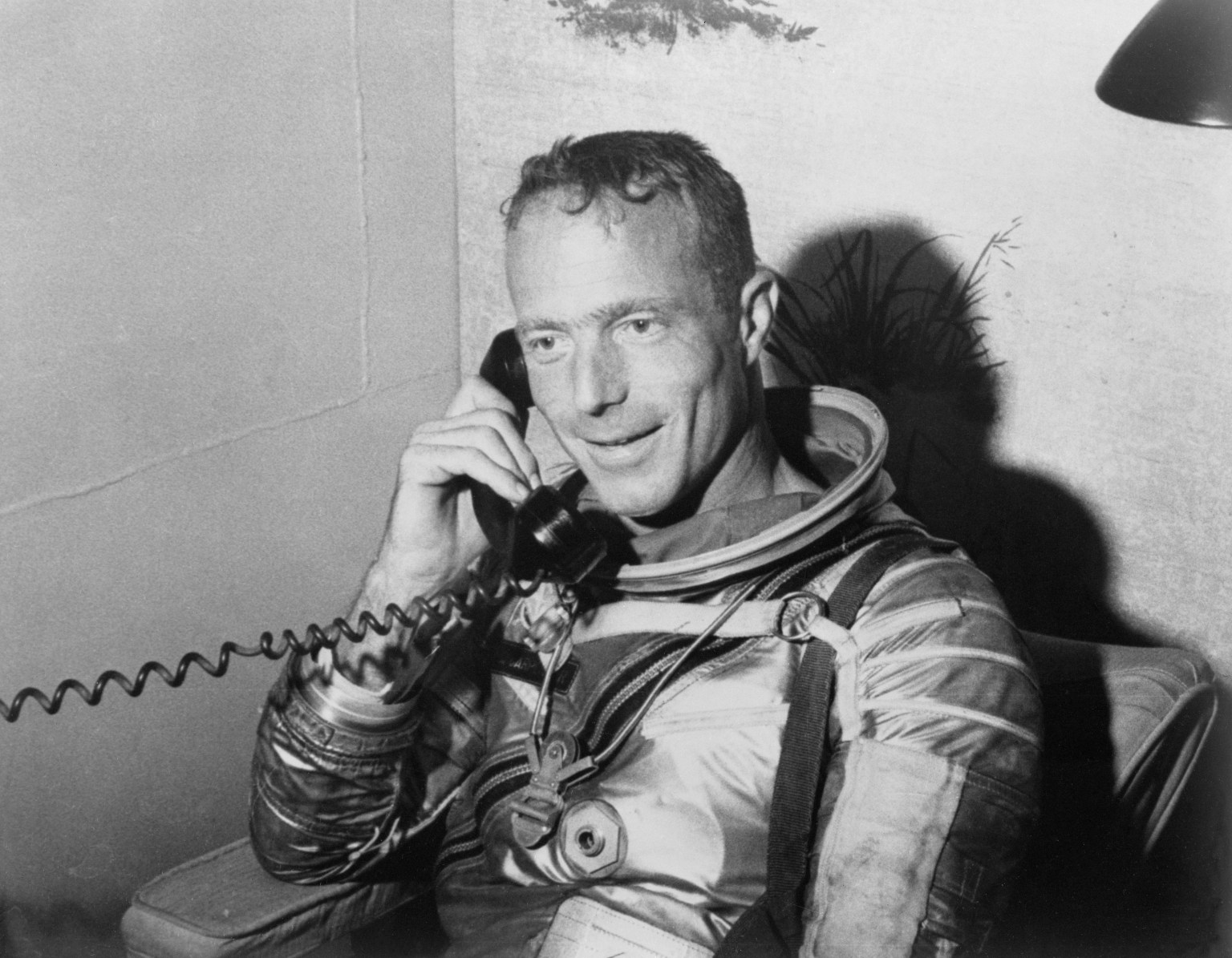
NASA Archives
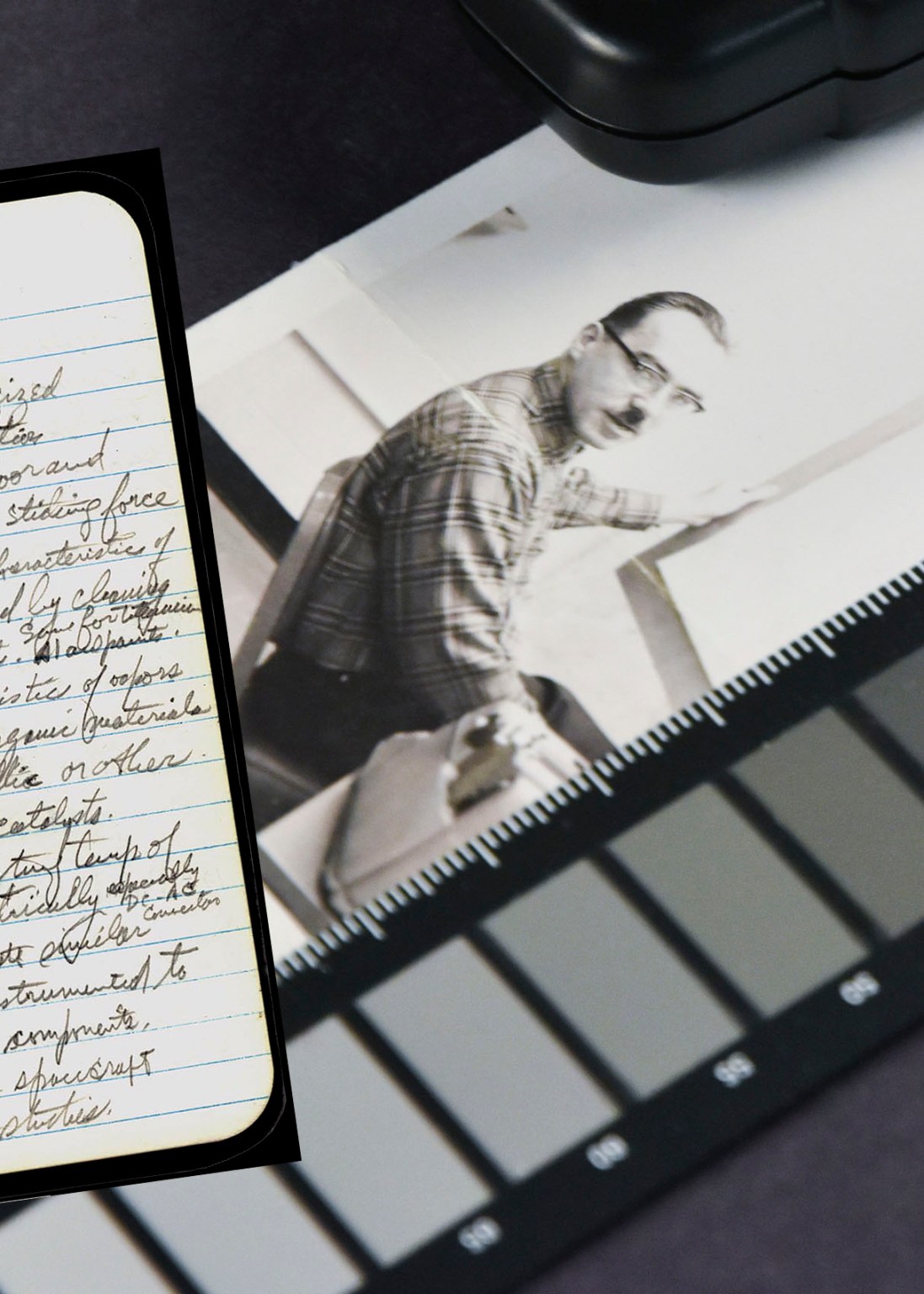
Finding the Universe
Travel tales, photography and a dash of humor
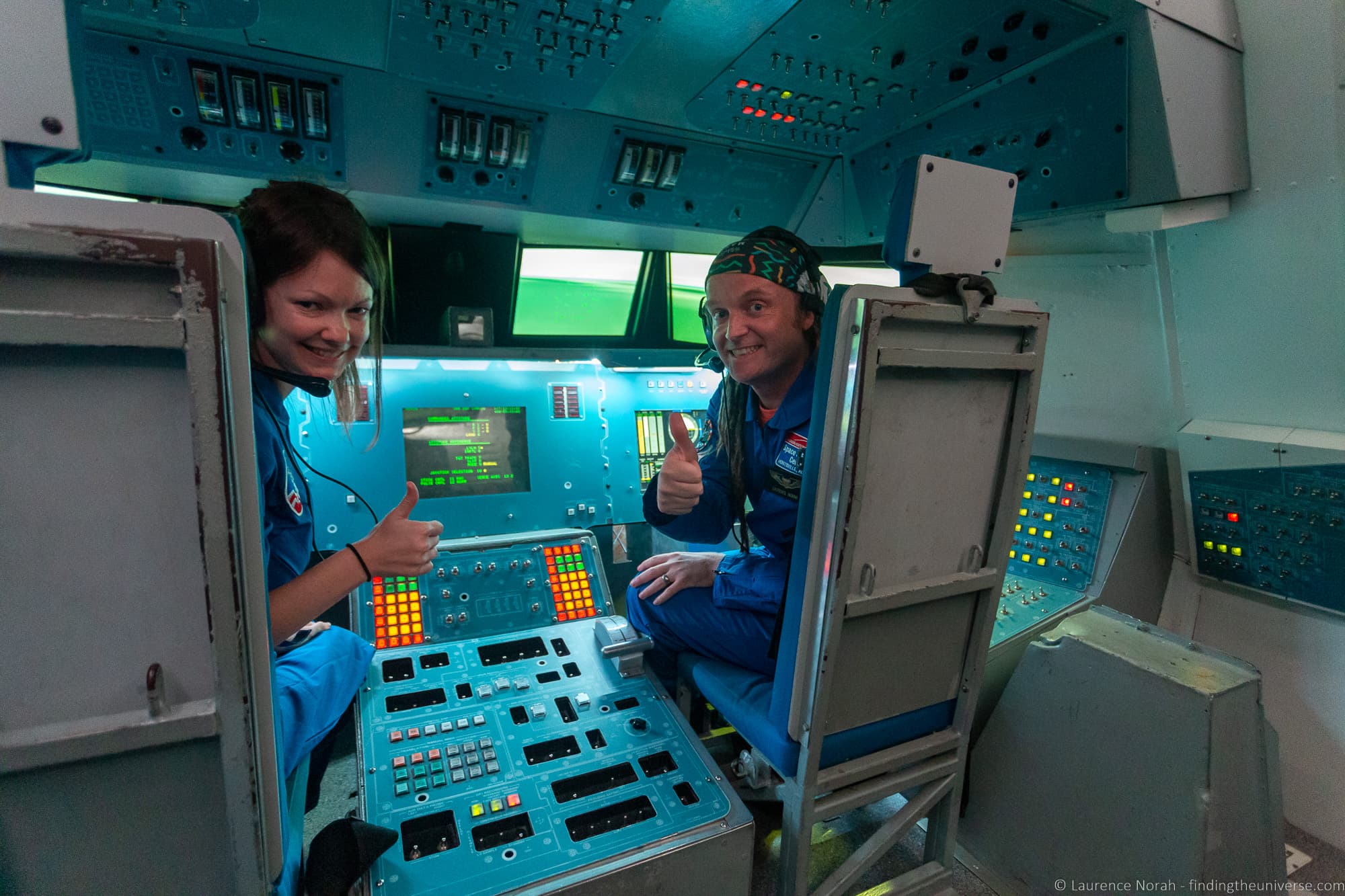
Space Tourism: How to Visit Space as a Tourist
Last updated: August 28, 2023 . Written by Laurence Norah - 4 Comments
Despite the name of this blog, I have been distressingly earth bound for all of my years thus far. Given recent developments in space exploration technology though, hope is not yet lost for the dream of going into space as a tourist – without having to shell out the millions of dollars that past tourists have paid!
In today’s post, I’m going to talk about a few things. I’m going to cover where space travel & exploration is today.
I’m going to talk about what options we have now, and may have in the future, for getting into space as a tourist. And I’m also going to cover a few ways those of us stuck on Earth without access to a giant pile of cash can still get our space fix around the world!
The State of Space Travel as a Tourist in 2023
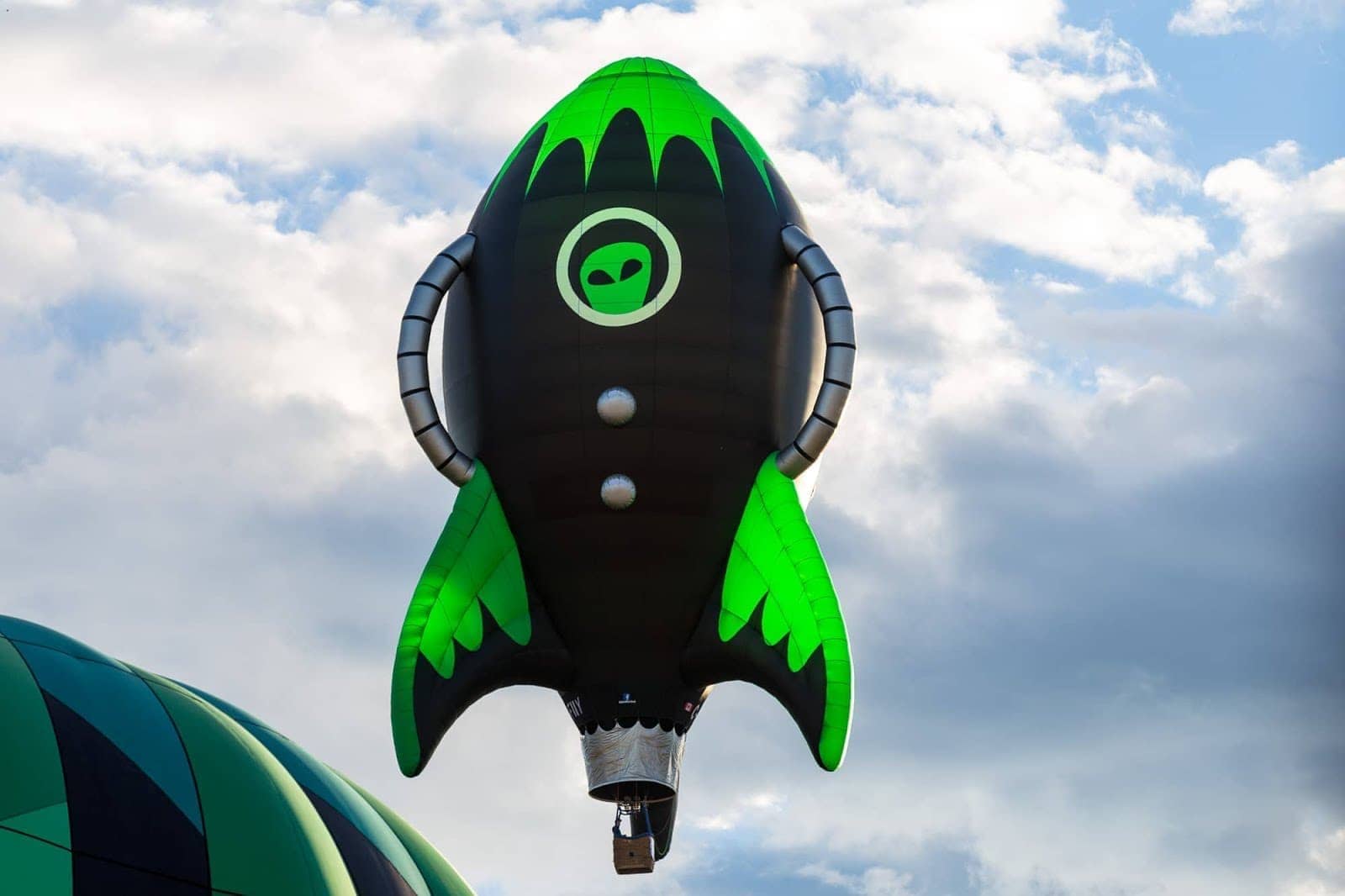
Huge strides are happening right now in space exploration, particularly with private companies looking at opening up space to your average person. Admittedly, right now, space tourism isn’t exactly accessible.
Up to 2009, only 7 people made it into space as tourists, all travelling with the Russian Space Agency, and all paying in excess of USD $20 million.
These weren’t exactly hop-on hop-off trips either, with the participants undergoing months of training, and many of them actively running their own experiments in space. So to call them space tourists is perhaps a bit of a misnomer.
However, things have now changed, and trips into space are becoming more affordable. Admittedly, they aren’t exactly “budget”, but they are less than $20 million a go.
So what’s changed?
Well, put simply, private investment. Whilst massive government organisations like NASA , the Russian Space Agency and the European Space Agency are always researching and expanding their space exploration efforts, their focus isn’t exactly on getting folks like you and me into space – at least not in the near term. Their focus is on long term scientifically focused exploration missions, with perhaps the most exciting being NASA’s Journey to Mars .
Other organisations though, see the potential for space based tourism as a way to generate funds and publicity for their projects. There are three main players in the space tourism business right now – Virgin Galactic , SpaceX and Blue Origin .
Let’s take a look at the main players with whom you have a real chance of getting into space within the next few years.
How to Go To Space As A Tourist
Other than flagging down a passing UFO Ford Prefect style, or signing up to be an astronaut with a government agency, getting into space is a bit tricky. But that’s all changing, and these are the companies with whom you are most likely to be able to travel into space.
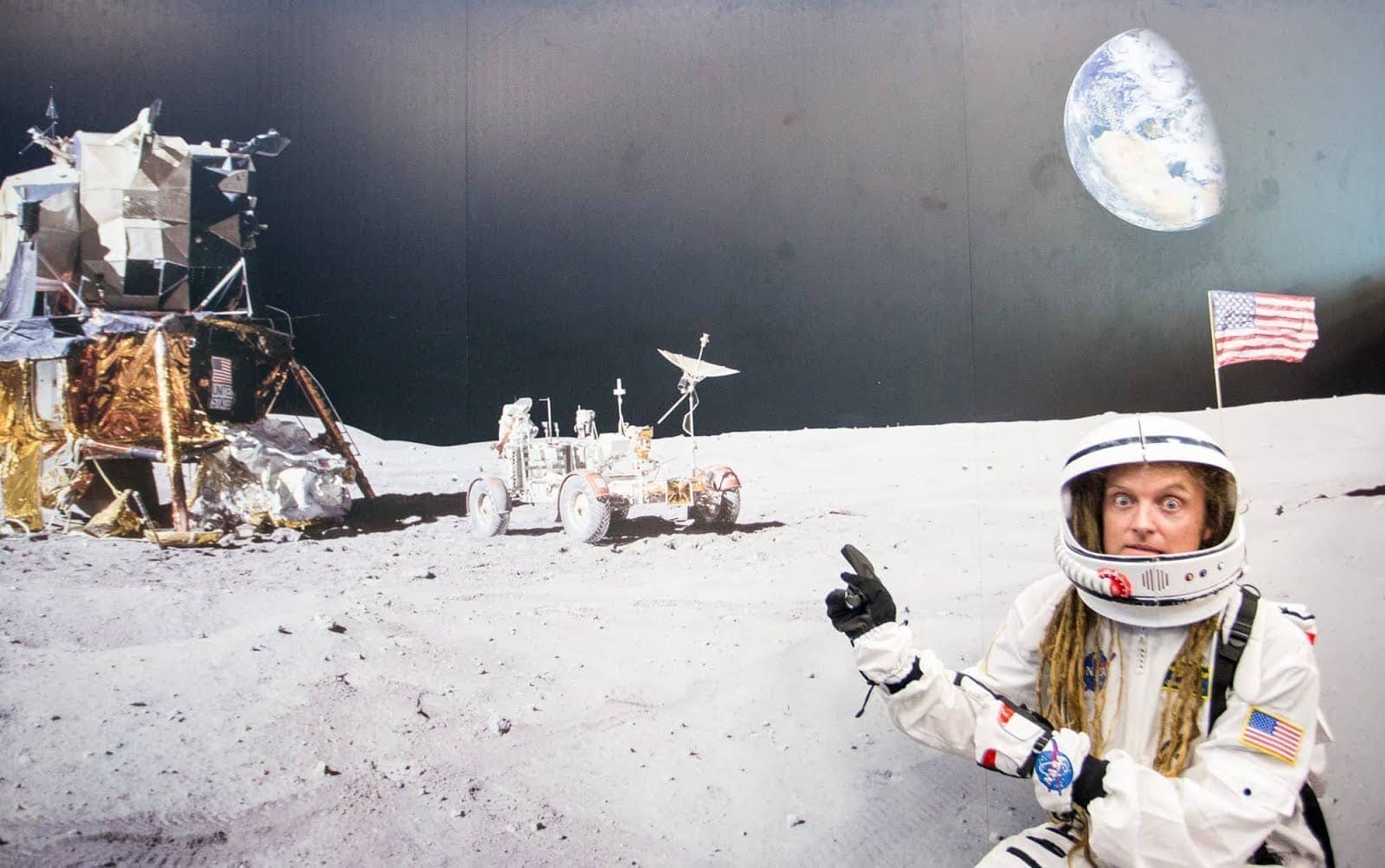
1. Virgin Galactic
Part of the Virgin Group headed up by Sir Richard Branson, Virgin Galactic currently offers sub-orbital flights to paying passengers aboard their SpaceShipTwo and SpaceShipThree craft.
Sub-orbital means that you’re not high enough to actually orbit the earth, but as the goal you do pass the 100km line that marks the edge of space, you will technically be in space, and also experience weightlessness. Hurrah!
The good news is that as of June 2023, commercial space flights have actually commenced. Trips are scheduled to go monthly, and you can now buy tickets for a voyage into space with Virgin Galactic. They are currently on sale for $450,000.
Admittedly, $450,000 USD isn’t exactly small change, but it’s a lot less expensive than the $20 million that previous space travellers have paid. For your money, you get three days of training at Spaceport America in New Mexico, a flight into space, a somewhat incredible view and a period of weightlessness. Not too bad.
2. Blue Origin
Owned by Amazon billionaire Jeff Bezos, Blue Origin is a private company which initially appeared to be focusing on sub-orbital flight, much like Virgin Galactic.
Unlike Virgin Galactic though, which uses a combination of a normal plane and a rocket plane to achieve the necessary space altitude, Blue Origin are using more conventional rocket technology, with a focus on re-usable components that cut the cost of launches.
Other than the spacecraft, the experience is largely the same – a sub-orbital flight that comprises a few days of training in Texas, a journey lasting around 11 minutes to up beyond the 100km line, weightlessness and some incredible views.
The technology to do this will look familiar to any fans of existing space flight technologies, including the capsule that returns to Earth by parachute, meaning that there are fewer technical hurdles to overcome.
As of 2021, flights have commenced on the New Shepherd, with Jeff Bezos being the first into space. The ticket for the first commercially available seat in the July 2021 launch was auctioned off for a cool $28 million.
Since that launch, there have been a number of flights with paying customers.
Regular pricing isn’t set, although it’s currently rumored to be around $1 million per seat. A timeframe for general availability of commercial flights isn’t yet known. You can sign up to be kept informed and updated however.
Perhaps even more excitingly than the New Shepherd program is its successor – the New Glenn program. This should offer longer duration, possibly even orbital flights, although details are currently sparse on the ground, with operations aimed to launch in late 2024. We do know however that priority on these trips will be given to New Shepherd customers.
Last in our trio of serious contenders for firms that will take your money and send you into space in the next few years is SpaceX .
SpaceX is owned by Elon Musk, who is particularly famous for being the CEO and co-founder of Tesla Inc, the electric car and battery manufacturer, amongst other things.
SpaceX largely focuses on commercial launch capabilities, with a particular focus on reusable rocket technologies that bring down the cost of putting payloads into orbit.
They’ve been hugely successful in this field, with multiple achievements, including being the first privately funded company to successfully launch, orbit and recover a spacecraft.
They were also the first private company to send a spacecraft to the International Space Station, and have since flown many missions to the ISS.
Whilst the majority of their work is on commercial and government contracts for putting things like satellites into orbit, some recent developments have put SpaceX firmly on the space tourism map.
First, in 2017 they announced that they had been contracted by two private individuals who want to go on a trip around the moon. This was originally due to launch in 2018, but has been postponed until at least 2024. It will be by far the most ambitious space tourism endeavor to date by any company, and you can read more about the project here .
SpaceX are also starting to sell tickets on their Crew Dragon capsule, which is the launch system NASA is using to shuttle astronauts to the ISS. These are not generally available, but a 3-day mission consisting entirely of tourists took place in 2021, with further missions expected. These are still priced in the tens of millions of dollars though, so don’t bank on these becoming affordable for a while to come.
Next, SpaceX is actively working on technology to colonise Mars, with a lofty goal of setting up a permanent colony on the red planet, home to over a million people, within the next 100 years.
Whilst the current estimate of cost for such a ride is in the region of $10 billion USD per person, SpaceX is aiming to bring that down to $100,000 through the development of their Interplanetary Transport System . This won’t happen in the near-term, but by the end of the century tourism to Mars might be a real possibility, with lunar and earth-orbital flights the norm by then.
4. Other Contenders
So those are the main players who, in my opinion, have the most realistic chances of taking you to space in the coming decade. But they aren’t the only players in the space tourism arena! Here are a few others to be aware of who might give you a chance of getting off Planet Earth.
Bigelow Aerospace: Bigelow Aerospace are actually a pretty major name when it comes to space technology, and if you ever happen to find yourself in a hotel on the moon or floating around the Earth, it’s likely going to be inside one of their inflatable habitats.
This isn’t theoretical either, they’ve got an inflatable capsule attached to the International Space Station already undergoing feasibility testing. Owner Robert Bigelow made his fortune in hotels, and he sees no reason why we can’t have them in space too.
Space Perspective: Space Perspective are taking a slightly different approach to everyone else, in that their route to space is to fly passengers 100,000ft above the ground in capsule carried aloft by a gigantic hydrogen filled balloon.
Ok, so 100,000ft isn’t exactly space, but it is high enough to see the curvature of the earth. It’s likely to be a more sedate and relaxed experience as well, compared to firing yourself into space on some sort of rocket at least. And whilst experiencing zero-gee isn’t going to be on the cards, you should be able to enjoy the views from the wraparound windows whilst enjoying a tipple from the on-board bar!
Tickets for 2024 flights have already sold out, but you can book for 2025 at a cost of $125,000 per person.
Boeing: Boeing are currently under contract with NASA to build a crew transport vehicle that would be compatible with a number of rocket systems, primarily for the purpose of shuttling astronauts to the ISS. It was originally due to start those flights in late 2018. However, testing did not start until late 2019, and the current timetable for crewed flights is now 2023.
As part of their contract, this CST-100 Starliner was specified to include one seat specifically for the purposes of space tourism , allowing one passenger to just tag along for the ride as it were. For a price, naturally. That price is currently unknown, although the original goal was to have it price competitive with the Russian Space Agency, so don’t expect it to come under the tens of millions mark!
Mars One: Mars One was an organisation with a goal of establishing a permanent human colony on Mars by the year 2035. Announced in 2012, it encouraged members of the public to sign up for the one-way mission, which resulted in over 200,000 applicants. That was whittled down to 100, and then a final 24 candidates.
Unfortunately, the project was dogged by criticism, particularly around the technical and financial feasibility of the plan. Finally, Mars One entered administration in 2019.
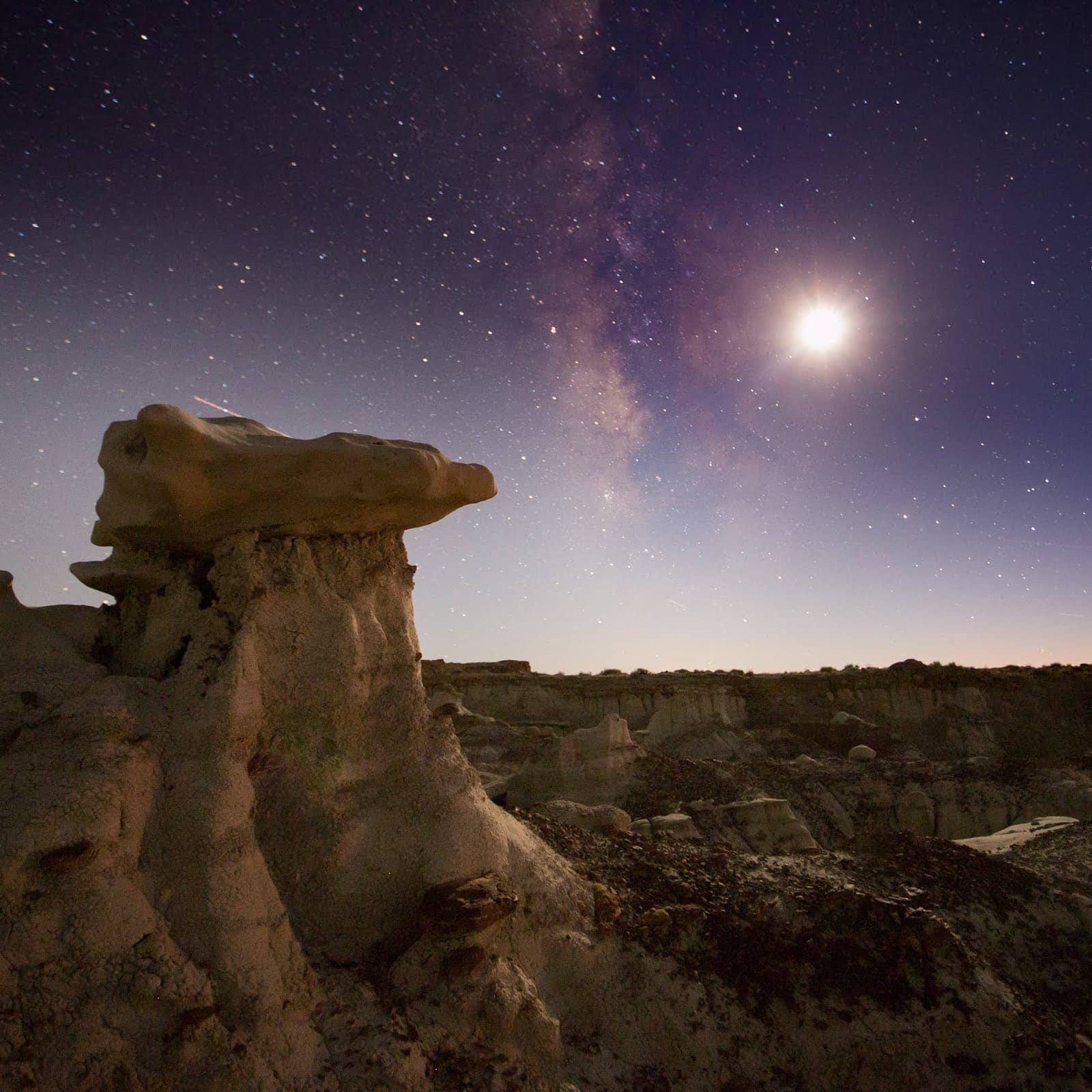
The Best Space Sights and Activities on Earth
Ok, so based on all the above, you’re probably realising that space is still a pretty tough place to get to right now, and even over the next few years it’s still going to be pretty darn expensive for a fairly brief jaunt.
Don’t fret though. Planet Earth is a pretty cool place, and there are a lot of space-related activities you can take part in without re-mortgaging your house and strapping yourself to a rocket.
Here are a few places you can learn about space and space travel in the meantime! Let’s look at these.
1. Active Spaceports
Whilst you might not get into space right now, you can still visit a spaceport and dream of the future! I’ve picked three spaceports for you to think about visiting.
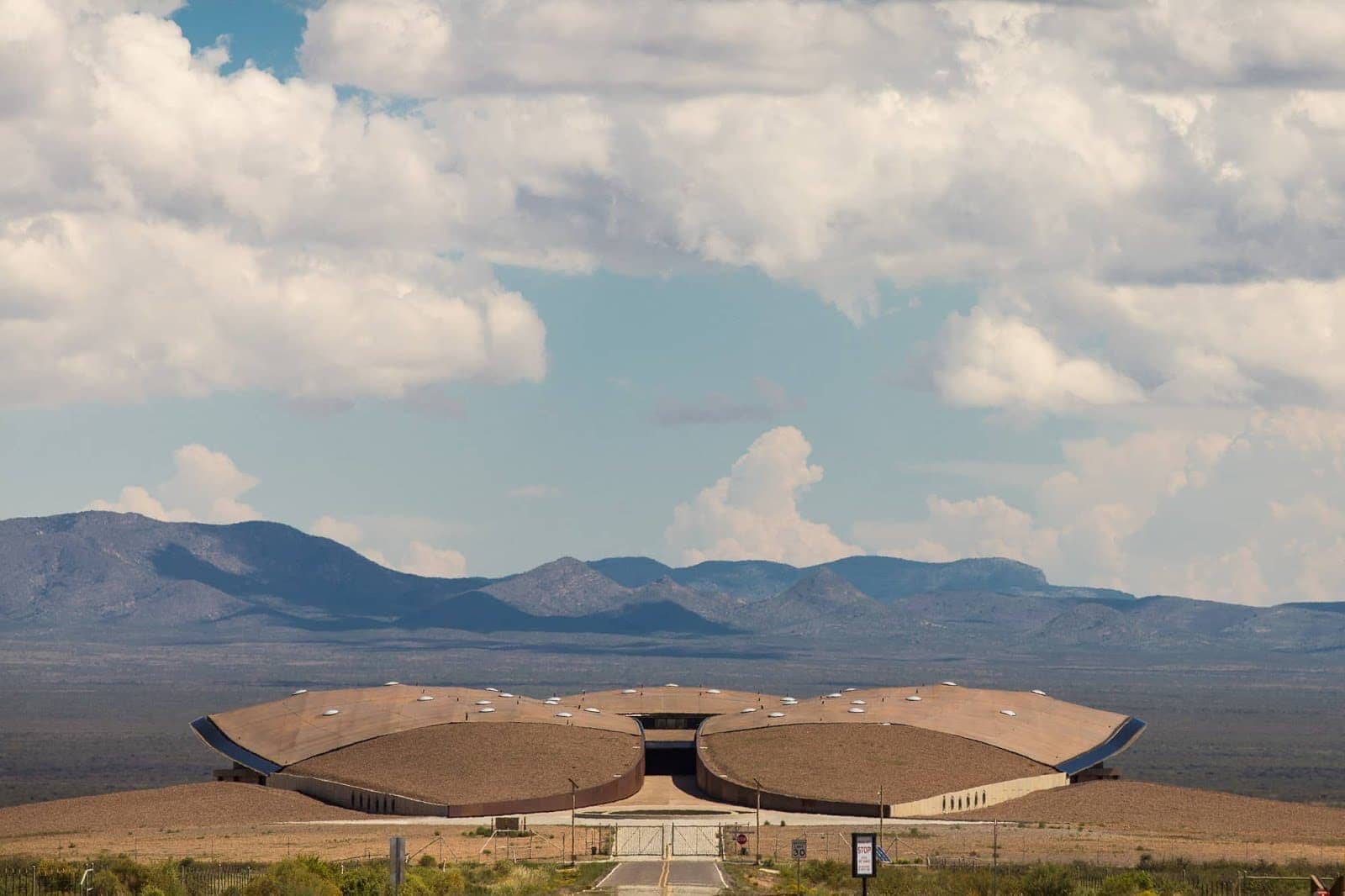
Spaceport America, USA. Set in the high New Mexican desert, Spaceport America is the world’s first purpose-built commercial spaceport, meaning it’s designed for commercial users. Yes, people like you and me. It’s the home base of Virgin Galactic, and is where that company will be operating from when they finally launch their space tourism flights. SpaceX also conduct some of their testing here. Unfortunately, you still can’t board a space trip here, but it’s a worthwhile place to visit, if only to get a tantalising glimpse of a possible future.
Kennedy Space Center, USA. Found in Florida, Kennedy Space Center is the main launch pad for NASA’s operations, and is where Apollo and Space shuttle launches took place. It’s a massive facility, spanning 144,000 acres. There’s a visitor centre on site, where you can learn all about NASA and it’s space operations, see an actual space shuttle and even experience a simulated space shuttle launch. Kennedy Space Center is still very much an active launch site, and you can also come here to watch rockets blast off into space – see their website for the launch schedule .
Baikonur Cosmodrome, Kazakhstan. One of the world’s most famous spaceports, and certainly the oldest and largest, Baikonur Cosmodrome is where the majority of Russia’s space program has operated from, including the first man into space, Yuri Gagarin. It’s still very active, and you can in theory visit, however prices are steep for a one day tour ($700+), and can only be arranged via a specialist tour operator in a complex process that needs to be booked weeks in advance.
2. Space Museums
As well as active space ports, there are a lot of museums around the world dedicated to sharing man’s activities in space. Here are a few of the best.
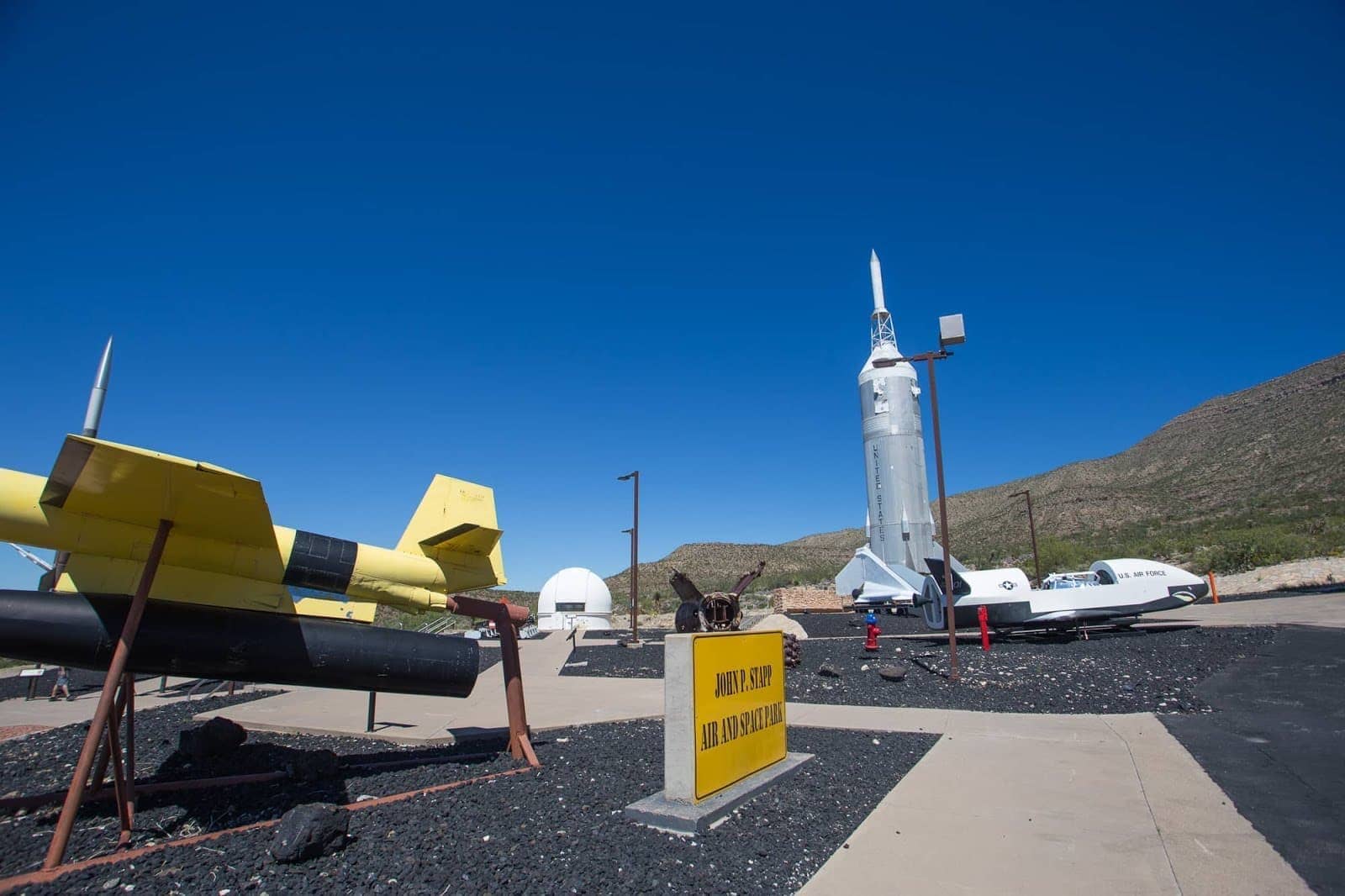
Space Center Houston, USA. The official visitor centre for NASA’s center for human spaceflight activities, Space Center Houston is an excellent place to come and learn all about NASA’s efforts around getting people into space. It has a number of artifacts from our explorations to date, including a lunar module replica and various actual capsules that have been into space. Tip – if you’re visiting a few sights in Houston, you can save money by investing in a CityPASS card which will get you into the Space Center as well as a number of other attractions in the city.
New Mexico Museum of Space History, USA. Found in Alamogordo in southern New Mexico, the five storey New Mexico Museum of Space History is full of information about man’s efforts to get into space, with everything from information on early rocket technology through to more modern day exhibits including a space shuttle landing simulator. It’s also home to the International Hall of Space Fame, a planetarium, and offers fantastic views across the White Sands National Monument.
Smithsonian National Air and Space Museum , USA . Found in Washington, D.C., this enormous museum is home to the world’s largest collection of historic aircraft and spacecraft in the world, including the Apollo 11 module and clothing worn by astronauts. With over 60,000 objects on display, you won’t run out of things to look at!
The National Space Centre, UK. Both a museum and an educational resource, the National Space Center in Leicester, UK, is home to six interactive galleries and the UK’s largest planetarium. A highlight though is the 42 metre high Rocket Tower , which houses a number of upright rockets, really giving you a feel for the enormity of these machines.
The U.S. Space and Rocket Center. Found in Huntsville, Alabama, right next door to NASA Marshall. The U.S. Space and Rocket Center has loads of information on the history of space flight, including two full size Saturn V rockets! This is also where you can attend Space Camp , a hands-on multi day training program for all ages, which will take you through a range of training similar to that which real astronauts do!
3. Space Themed Sights
We may be currently fairly stuck on the planet, but that doesn’t mean we’re not still hurtling through space, a small rock in a vast galaxy. Here are a few ways to help remind ourselves that there’s more out there than our horizon.
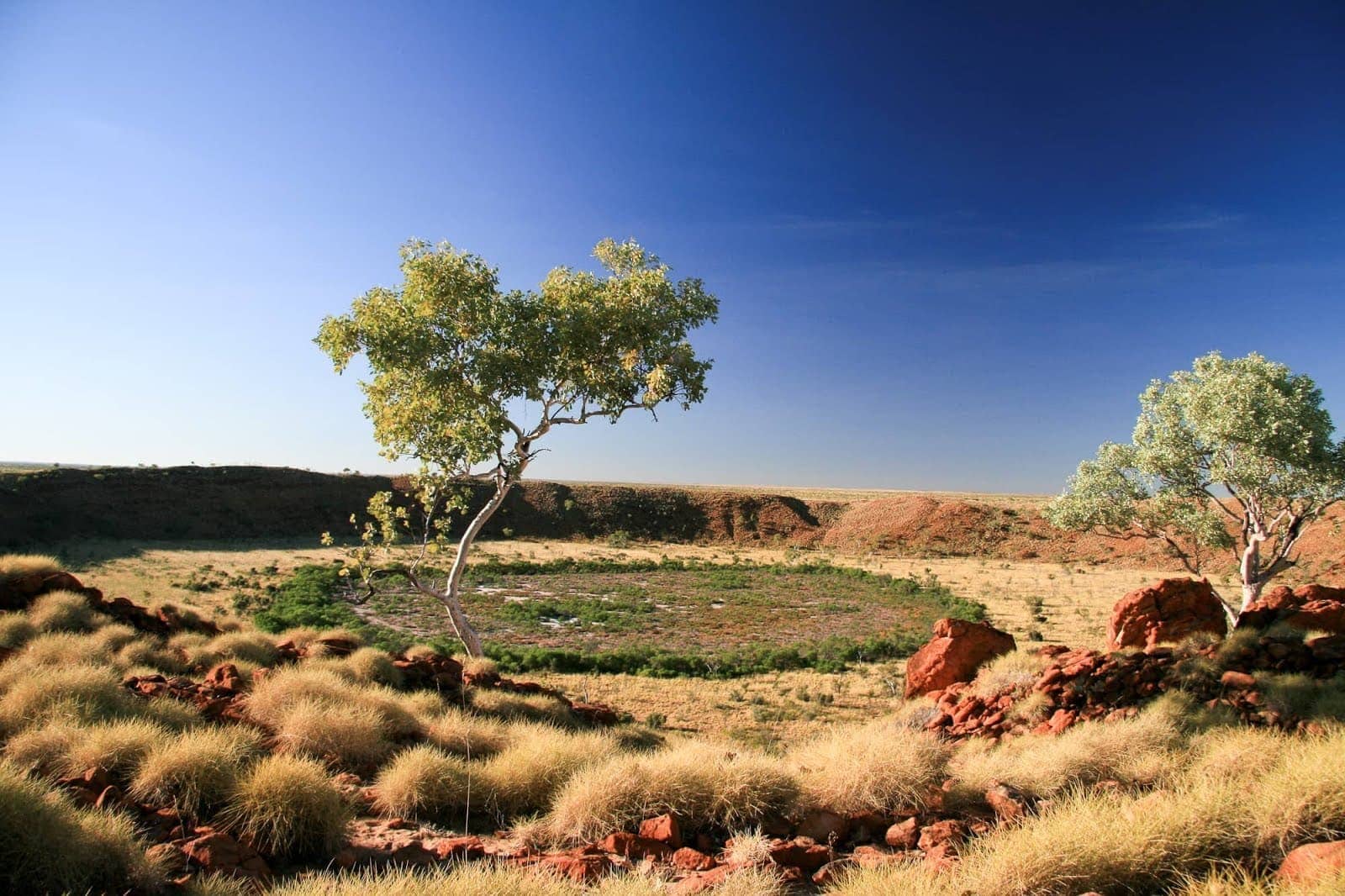
Meteor Craters. On our journey through space we regularly bump into errant lumps of space debris – around 100 tons a day in fact. Most often these lumps are so small (dust-specks really) that they just burn up in our atmosphere, creating beautiful shooting stars. However, anything larger than a marble has a chance of making to earth, although there are a lot of factors at work.
According to NASA , it’s the lumps that are around the size of a football field and up that make the most impact, and one of these hits us every couple of thousand of years. They can cause significant damage and leave a lasting impact. Two worth mentioning that you can visit are the aptly named “ Meteor Crater ” in Arizona, USA, and the Wolfe Creek Meteorite Crater in Western Australia. Both of these are around a kilometre in diameter, meaning you can see the whole structure with the naked eye and really get a feel for the force required to create such a hole. Of course you can also find smaller ones all over the world.
Star Gazing. You might not be able to get to the stars, but that doesn’t mean you can’t appreciate them. I always find that just lying back and staring into the vastness of space from a really dark location is a very powerful experience. You need to be somewhere far away from light pollution to get the best views of the night sky – there are dark sky preserves (and even festivals !) where you can get a great view, otherwise, head as far away from the lights as you can and just look up.
4. Giant Telescopes
How about if you can’t get into space, you try just looking at it through a really big magnifying glass and pretend you’re there? It might be as close as you can currently get to space for free, whilst also being wowed by humanities technological accomplishments. Below are four locations around the world where you can learn all about the art of looking into space. Of course, there are many more sites around the world and you can find a list of some of the major telescopes here although not all can be visited by the public.
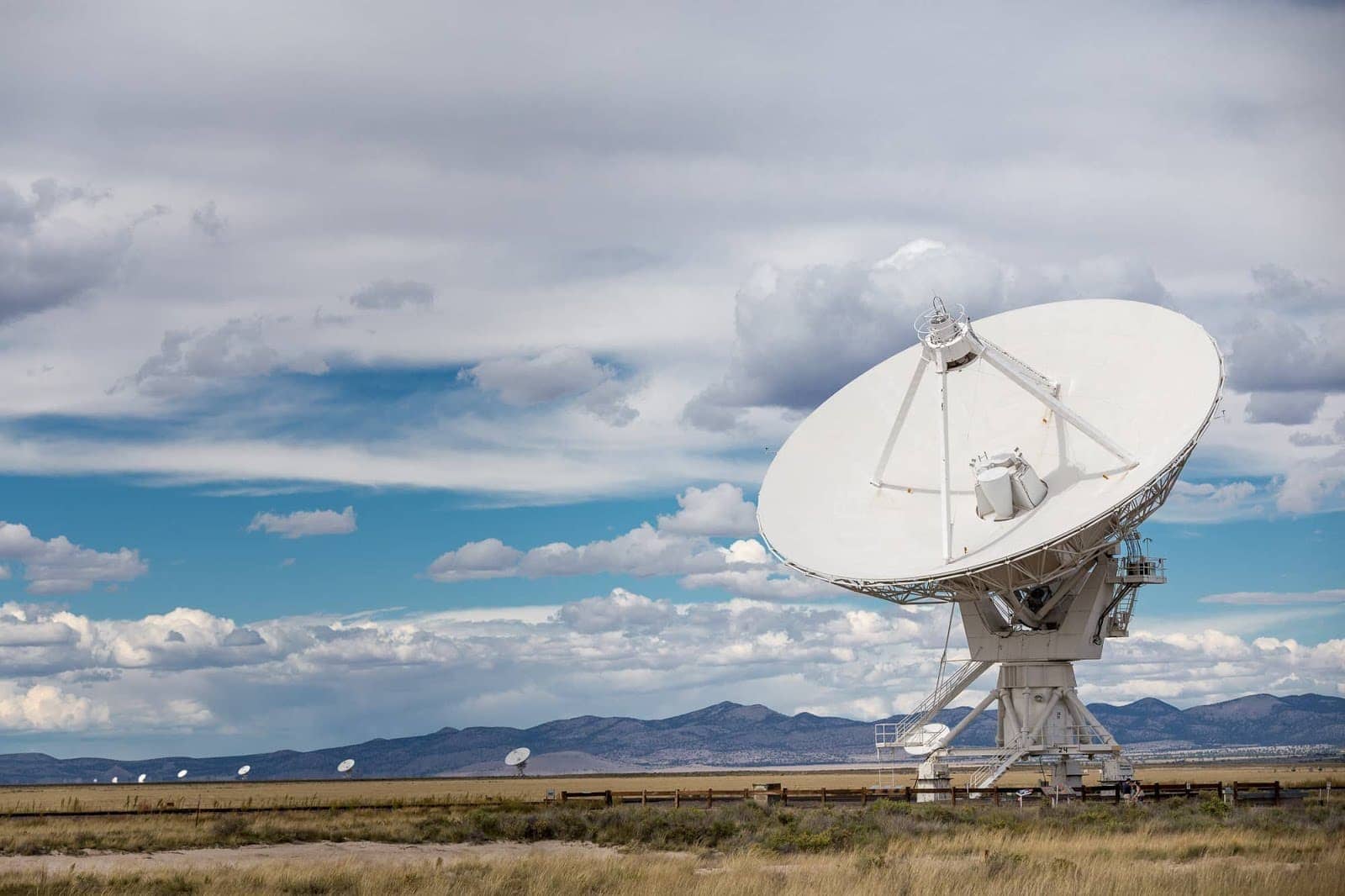
The Very Large Array, USA. Far out in the New Mexico wilderness, the Very Large Array is one of the world’s largest and most impressive radio telescopes. Unlike an optical telescope, which look at visible light waves, a radio telescope looks at radio waves, and from that we can learn all sorts of things from how black holes are formed through to the creation of the universe itself. These radio waves require a very large telescope, which is why the VLA is actually made up of 27 dishes, which work together to capture radio waves. There’s a small visitor centre and self-guided walking trail, and there are guided tours on the first Saturday of the month. See the official website for more details.
Jodrell Bank, UK. If you’re in the UK , then a trip to Jodrell Bank is a good option for viewing impressively large radio telescopes. In fact, Jodrell Bank is home to the world’s third largest steerable radio telescope, as well as a number of other active telescopes. There’s a visitor centre where you can learn all about the telescopes, and all sorts of other space-related things.
The Very Large Telescope, Chile. Way up high in the mountains of Chile is the world’s most advanced visible-light astronomical observatory – the aptly named “ Very Large Telescope ”. Operated by the European Southern Observatory, this is the most impressive optical instrument in the world to date, consisting of four main mirrors that are over eight meters in diameter, as well as four 1.8m diameter mirrors. These work together to create a final image, and the telescope is powerful enough that it would be able to make out a cars headlights on the moon. It’s fairly remote, what with it being on a mountain top in Chile, but you can visit – check here for more information on tours.
Green Bank Observatory, USA – At time of writing, Green Bank Observatory is home to the worlds largest steerable radio telescope, the Green Bank Telescope. Constructed in 2001, it’s one of the newest US telescopes, and with a total collecting area of 2.3 acres, is certainly impressive to behold. You can take a tour of the observatory, and there are also weekly and monthly events at the site.
5. Extra-terrestrial spots
If you’re really desperate to get off planet, you might want to frequent a location which has a history of extra-terrestrial activity such as UFO sightings. Whilst E.T. is yet to make formal contact, who knows, you might get lucky and have the chance to hop on a passing spaceship!
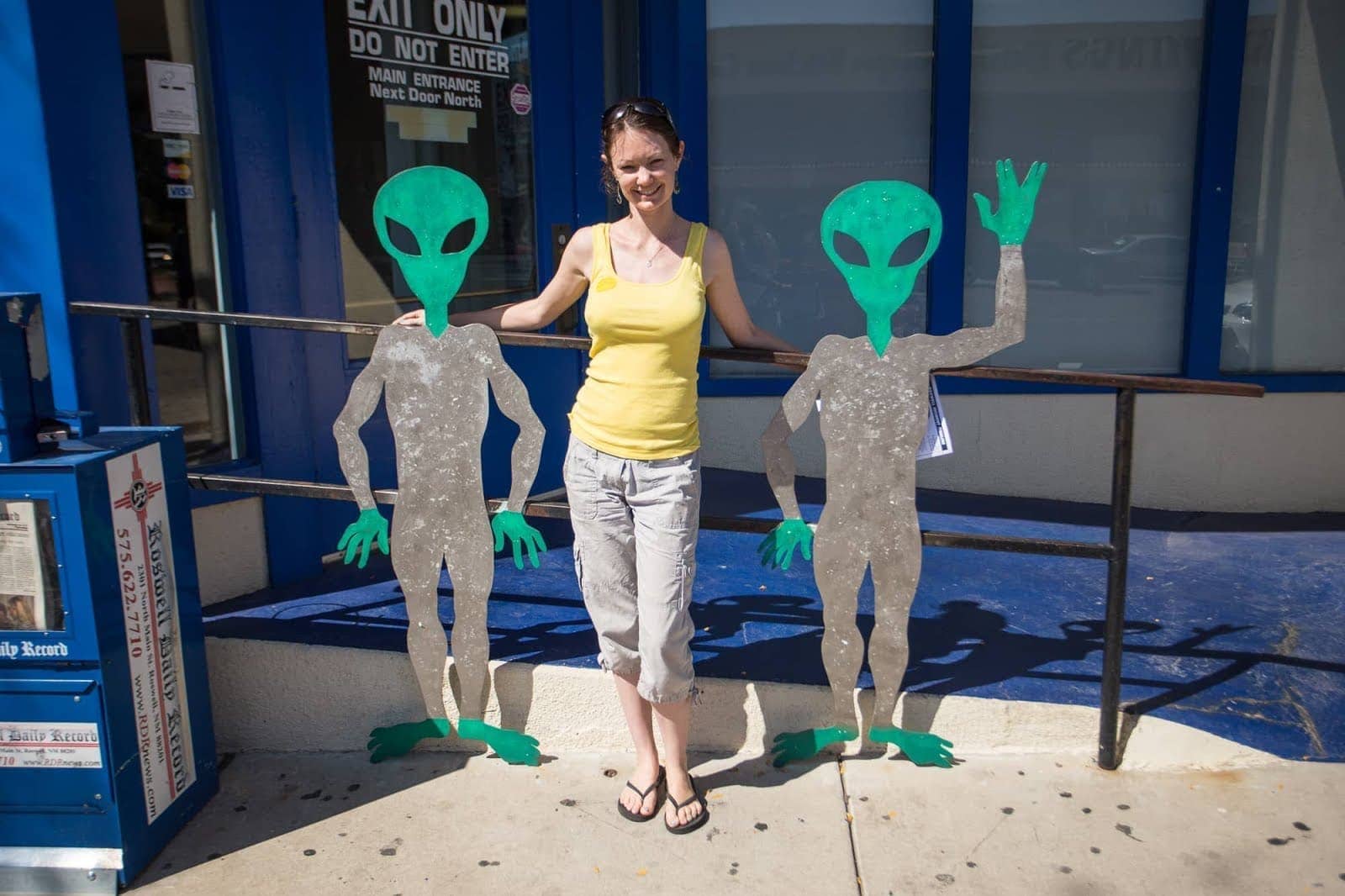
Roswell, USA. If you want to learn about aliens, then the town of Roswell in New Mexico has definitely got to be on your list. It became famous as the alleged site of a huge government cover-up of a supposed alien spaceship crash at a nearby ranch property, and the town has since embraced it’s position as the world’s most famous UFO hotspot. There are a number of alien themed attractions here – we’d recommend visiting the Roswell UFO museum as a good starting point.
El Enladrillado, Chile. Central Chile is well known as a UFO spotting hotzone. So much so in fact, that the country’s national tourism board established a UFO trail, a 30km long designated trail in the Andes mountains that centres around the town of San Clemente. This is definitely a good place to come to spot UFO’s, although the national tourism authority is keen to stress that a sighting isn’t guaranteed.
Nullabor Plain, Australia. When I was travelling in Australia, I had a memorable evening out in the outback on the vast Nullabor Plain with a chap who was convinced he was regularly visited by aliens. He might have been on to something of course, with this region of Australia being particularly famous for UFO sightings. And if you don’t see a UFO, fear not, the star gazing here is pretty epic too!
HR Giger Museum, Switzerland. If you prefer your aliens of the fantastical science fiction type, then a visit to the HR Giger museum in Gruyères, Switzerland, should definitely be on your list. It’s home a large collection of works by Swiss artists HR Giger, who famously created the monsters from the sci-fi classic horror movie Alien (and its sequels). Definitely one for the sci-fi fans.
Further Reading for your Space Trip
Well, that was a lot about space. Hopefully you’ve learnt a bit about your options for getting into space as a tourist, as well as some slightly more cost-effective ways to get your space fix on! Here are a few resources that you might find useful.
- Our favourite sights along the New Mexico Space Trail , USA. Plus a guide to attending the Albuquerque International Balloon Fiesta if you’re in New Mexico.
- Our guide to visiting Jasper National Park for their annual Dark Sky Festival
- A guide to attending Space Camp USA , as well as visiting the U.S Space and Rocket Center
- Official websites for Virgin Galactic , Blue Origin and SpaceX , for when you’ve saved up enough for that ticket to space
- The NASA Instagram feed , for mind blowing space images
- John Glenn’s memoir, to give you an insight into what it was like to be the first American to orbit the earth.
- Chris Hadfield’s book “ An Astronaut’s Guide to Life on Earth ”, helping you understand how to make the impossible a reality, which seems like a good place to end this post!
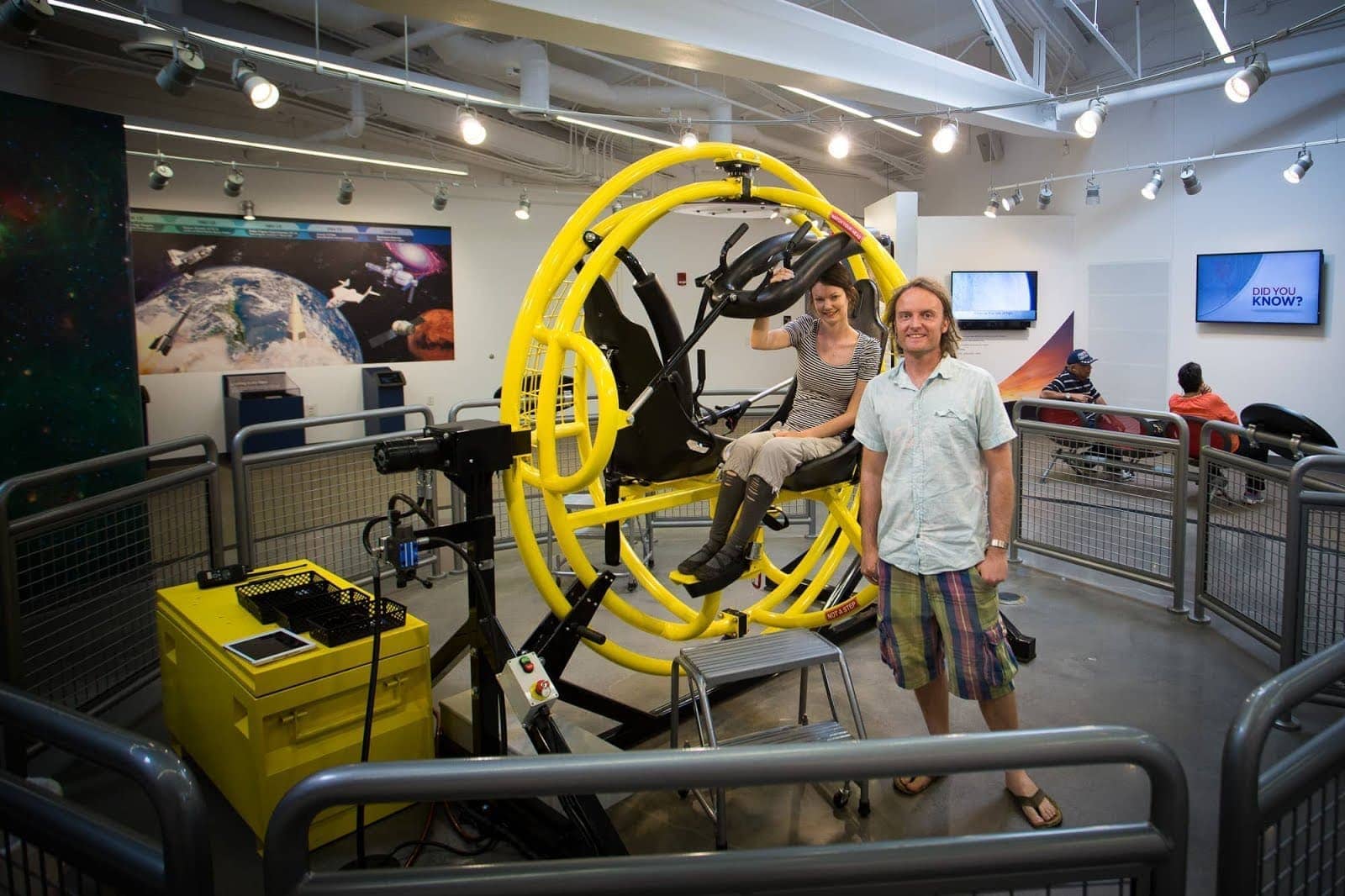
Well, that was a lot to write about space travel and space tourism! We’re not quite there yet, but with the pace of developments I see no reason why, in the coming years and decades, that I won’t finally be able to realise my dream of heading up into space for real. Let me know in the comments if heading into space is a dream of yours!
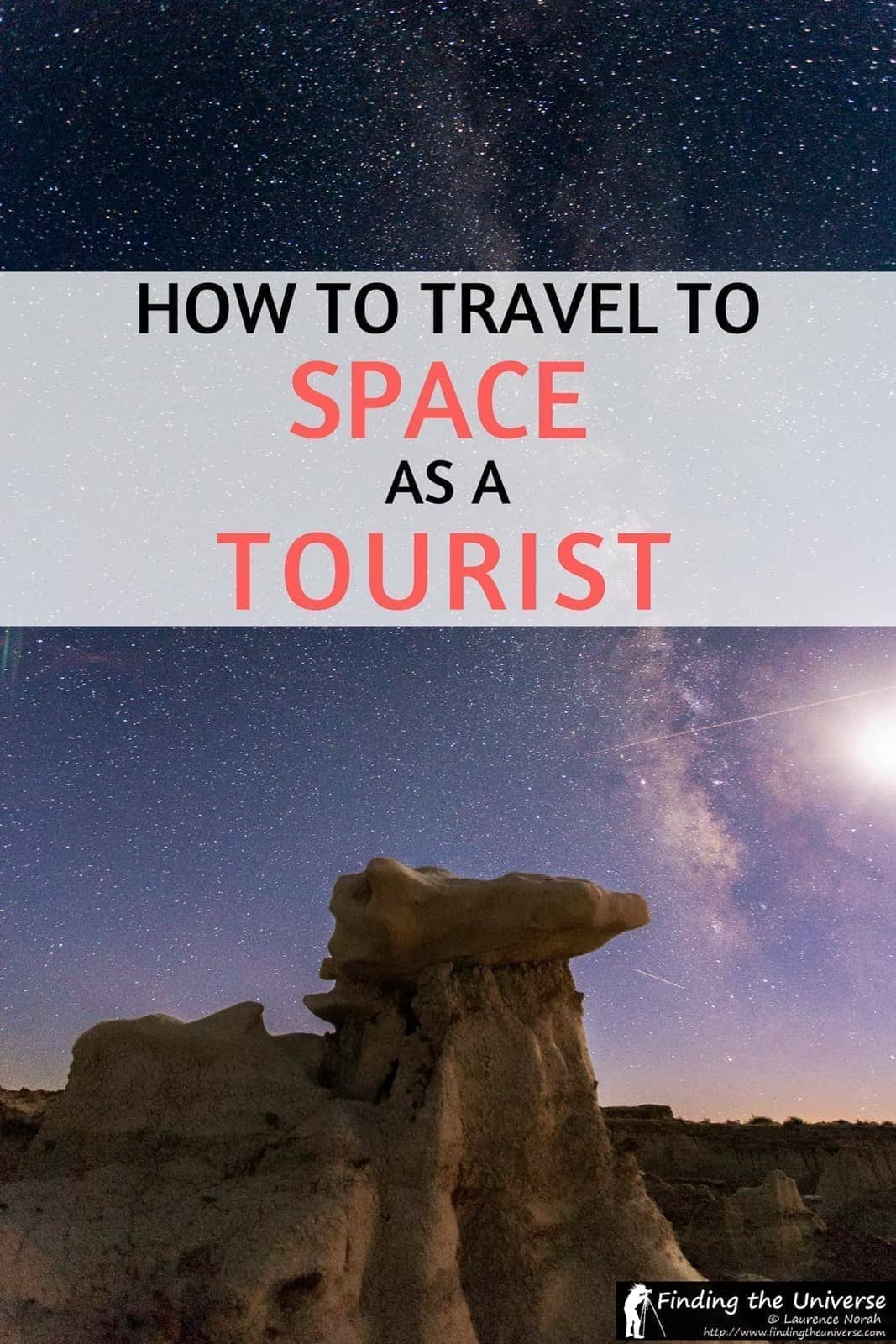
Enjoyed this post? Why not share it!
There are 4 comments on this post
Please scroll to the end to leave a comment
Lynn Magnuson says
17th February 2024 at 8:16 am
Traveling into space is something I’ve wanted to do ever since I was a child. I remember sitting in class and I think it was the third grade and watching Alan Shepard blast off. I knew at that point that someday I wanted to do the same thing. It hasn’t happened yet, but as time goes by the chance to do so, becomes more and more a possibility. I hope someday I do get the chance.
I love your article. Very well written and very informative. Keep up the great writing. That’s another thing I share a passion for. Writing
Laurence Norah says
20th February 2024 at 1:45 am
I’m right there with you! I really hope you get the chance to get into space some day soon. It’s definitely getting closer as a possibility 🙂
Safe travels, be they earthbound or not!
roshmand says
2nd July 2023 at 6:57 pm
amazing poat. thanks
4th July 2023 at 9:39 am
thank you very much 🙂
Leave a Reply Cancel reply
Your email address will not be published. Required fields are marked *
Let me know when there's a reply to my comment (just replies to your comment, no other e-mails, we promise!)
Subscribe to our monthly Newsletter where we share our latest travel news and tips. This also makes you eligible to enter our monthly giveaways!
We only ask for your e-mail so we can verify you are human and if requested notify you of a reply. To do this, we store your data as outlined in our privacy policy . Your e-mail will not be published or used for any other reason other than those outlined above.
Morning Rundown: Outrage after British PM leaves D-Day early, prosecutors reveal 'planning document' in serial killings, alleged 'Baby Reindeer' inspiration sues Netflix
SpaceX successfully launches its Starship megarocket to orbit, returning it to Earth for the first time
SpaceX successfully launched its Starship megarocket Thursday on an uncrewed test flight to orbit and back, achieving several key milestones for the first time.
The nearly 400-foot rocket is the most powerful booster ever developed and SpaceX aims to make the system fully reusable.
It is being designed to carry out missions to the moon and eventually Mars. Starship is expected to play an important part in NASA’s return-to-the-moon program : The agency selected it to carry astronauts to the lunar surface on its Artemis III mission, which could launch in 2026.
Starship lifted off at 8:50 a.m. ET from SpaceX’s Starbase launch site in Boca Chica, Texas. This was the spacecraft's fourth test flight and the first time it survived the full journey from liftoff to splashdown. However, it's not yet clear how much of the vehicle survived re-entry through Earth’s atmosphere.
Still, the test flight notched several crucial milestones. SpaceX showed that both the Starship spacecraft and the rocket’s first-stage, known as Super Heavy, can survive the fiery trip back through Earth’s atmosphere and make a “soft” and controlled splash down.
Less than 10 minutes after liftoff, Super Heavy executed a successful landing burn for the first time and splashed down in the Gulf of Mexico. After cruising in orbit for around 40 minutes, the Starship spacecraft made its re-entry and completed a landing burn for the first time.
Live camera views aboard Starship showed debris and damage to the vehicle before it splashed down in the Indian Ocean, but SpaceX heralded the test flight as a success.
“Congratulations @SpaceX team on an epic achievement,” Elon Musk, the company’s founder and CEO, said on X.
Starship's flight came during a busy week of launches: On Wednesday, Boeing's Starliner capsule launched on its first crewed test flight to the International Space Station.
Relive the launch in slo-mo
Denise Chow
SpaceX released a video of Starship's launch in slow-motion, showing the rocket thunder to life and lift off the pad.
'An epic achievement,' Elon Musk says
Elon Musk, SpaceX's founder and CEO, called today's test flight an "epic achievement."
"Despite loss of many tiles and a damaged flap, Starship made it all the way to a soft landing in the ocean!" he posted on X.
'Toasting' Starship
SpaceX employees toasted marshmallows to celebrate Starship's "toasty" ride through the atmosphere.
It will likely take some time for the company to release data and results from today's outing, but SpaceX continues to make progress with each ambitious Starship test flight.
Starship's first-ever landing burn
Starship appears to have successfully executed its first-ever landing burn before splashing down in the ocean. It's not yet clear how much of the ship survived re-entry through the atmosphere, but mission controllers confirmed that the vehicle completed the key burn.
Still celebrating
Video feeds from Starship have been spotty during re-entry, as is to be expected but you can hear cheers from SpaceX employees at the company's headquarters in Hawthorne, California, every time live views return.
"This is a nail-biter," one launch commentator said.
Next up: splashdown
Splashdown is expected in a few minutes, but it's unclear how much of Starship has survived at this point.

Burning up?
Pieces of Starship appear to be burning off as the spacecraft makes its way through the atmosphere.
Debris seems to be covering the onboard cameras, at least one of which now has a cracked lens, but the company still seems to be able to collect data from Starship.
Live views of re-entry
Cameras are capturing incredible live views of Starship's re-entry, showing plasma building around the spacecraft as it travels through the atmosphere.
It's rare to get a real-time look at this intense and high-stakes phase of a space vehicle's return to Earth.
From re-entry to landing
The entire re-entry process is expected to last for about 6 minutes.
If Starship survives the fiery trip through the planet's atmosphere, it should then fire its engines to flip over, then execute a key landing burn before splashing down in the Indian Ocean.
Starship begins re-entry
Starship is now attempting to execute the primary objective of today's test flight: re-entering Earth's atmosphere and splashing down in the Indian Ocean.
There is typically a communications blackout during this time, so it may take some time to confirm if the vehicle has survived the re-entry process.
A busy week of space launches
This morning's liftoff followed yesterday's launch of Boeing's Starliner capsule to the International Space Station. It's the spacecraft's first crewed flight — veteran NASA astronauts Butch Wilmore and Suni Williams are currently onboard in low-Earth orbit.
The Starliner spacecraft is expected to dock with the space station today at 12:15 p.m. ET. You can catch up on the news of yesterday's launch here .
What's next for Starship
Starship has been flying for more than 20 minutes. Roughly 47 minutes into the flight, the vehicle will attempt to re-enter the atmosphere and land "softly" in the Indian Ocean.
It will be high-stakes moment for SpaceX. During Starship's last test flight in March, the company said it lost contact with the spacecraft roughly 50 minutes into the flight, at an altitude of around 40 miles.
Today, SpaceX is hoping to show that Starship can survive the extreme temperatures of atmospheric re-entry and execute a controlled splashdown.
Short break before landing
The live webcast is pausing for about 30 minutes as Starship continues to coast in orbit.
The next milestone will come when Starship attempts to re-enter Earth's atmosphere and splash down in the Indian Ocean.
Celebrations from Texas
You can hear big cheers erupt from SpaceX employees at each milestone of the flight. The team has already accomplished one of the main objectives of today's test.
Splashdown of Super Heavy
SpaceX confirmed that the Super Heavy booster executed a successful landing burn and splashdown in the Gulf of Mexico. This is a big milestone for the company.
Starship is now coasting
Starship is now expected to coast for about 40 minutes up to an altitude of roughly 130 miles.
Meanwhile, the Super Heavy booster is attempting to make a controlled and "soft" landing in the Gulf of Mexico. During Starship's last test flight in March, Super Heavy did not execute a planned landing burn and was lost at around this stage of the flight.
And there it goes
Jason Abbruzzese
Separation of Super Heavy:
Starship separation confirmed
The Starship spacecraft has successfully separated from the Super Heavy first-stage booster, SpaceX confirmed.
The rocket's ascent seemed smooth, though it looked like one of the rocket's Raptor engines did not light at liftoff.
The moment of liftoff
SpaceX quickly posted a video of Starship's liftoff:
Looking good so far
The rocket passed through what's known as "Max Q," the moment of maximum dynamic pressure on Starship's ascent. The vehicle is now supersonic, flying faster than the speed of sound.
We have liftoff
The rocket has cleared the launch tower.
Fueling complete
SpaceX officials said the rocket and spacecraft are now fully loaded with 10 million pounds of propellant.
Five minutes to go
SpaceX said it is not working any issues ahead of the targeted launch at 8:50 a.m. ET.
If any issues do crop up, the company has a built-in hold in their launch countdown at T-minus 40 seconds. That means they can hold there for up to 30 minutes, if needed.
Weather looks good for launch
It looks cloudy around the launch pad, but SpaceX says weather conditions remain 95% favorable for this morning's launch.
Starship's flight trajectory
Take a look at what's in store for Starship as it prepares to journey into orbit and back.
Main objectives for today's flight
SpaceX is aiming to show that both the Super Heavy first-stage booster and Starship spacecraft can survive re-entry through Earth's atmosphere and achieve a "soft" splashdown.
Super Heavy is targeting a splashdown in the Gulf of Mexico. After reaching orbit, the Starship vehicle will aim to splash down in the Indian Ocean.
Both objectives will be crucial in developing Starship into a fully reusable system, which SpaceX has said will drive down costs and allow for quicker turnarounds between launches.
While full reusability is the company's ultimate goal, SpaceX said it is not planning to recover any hardware from today's test flight.
Live webcast underway
SpaceX's webcast of today's launch has begun. You can follow along on X .
How Starship stacks up
The nearly 400-foot-tall Starship megarocket is the most powerful booster ever developed. It is designed to take astronauts to the moon — and one day, perhaps on to Mars.
NASA is separately developing its own Space Launch System megarocket and Orion spacecraft for missions to the moon. As part of the agency’s Artemis program, NASA envisions regular missions to establish a base camp on the lunar surface before an eventual mission to Mars.
But the two rockets have key differences. Unlike NASA’s Space Launch System, SpaceX's Starship rocket will be fully reusable. A key objective of today’s test flight will be to demonstrate that the booster’s first stage, dubbed Super Heavy, can safely return to Earth and splash down in the Gulf of Mexico.
Astronaut Chris Hadfield hopes for "soft landings"
Chris Hadfield posted his best wishes for a successful launch — and landing — for Starship.
Fueling underway
SpaceX officials confirmed that fueling is currently underway. Starship uses liquid methane and liquid oxygen propellant.
What to expect for this flight
SpaceX made steady progress with each of its three prior Starship tests. The rocket’s debut flight in April 2023 ended when the booster exploded several minutes after liftoff.
A second Starship launch in November achieved several milestones, including the separation of the first-stage booster and upper-stage spacecraft, but the company lost contact with the vehicle shortly after.
Starship’s third test flight in March saw the spacecraft successfully reach orbit, but the vehicle was lost as it re-entered Earth’s atmosphere.
On Starship’s fourth test flight, SpaceX aims to show that both the upper-stage spacecraft and the rocket’s first-stage booster, known as Super Heavy, can make controlled, safe landings on Earth.
During the last test flight, a planned burn in the landing process failed and the Super Heavy booster ultimately broke apart over the Gulf of Mexico. This time, SpaceX hopes to execute the landing burn successfully, achieving a “soft splashdown” of the booster in the Gulf of Mexico. It is also looking to nail a “controlled entry” of the Starship vehicle through Earth’s atmosphere before it splashes down in the Indian Ocean.
Throwback to March
This morning's test flight will follow a similar trajectory as Starship's last outing in March. Here's a look back at some of the highlights from that launch.
Live from Texas
SpaceX said it is now aiming to launch Starship at 8:50 a.m. ET. The company's webcast will begin at around 8:20 a.m. ET.
Why this test flight is important
Starship's test flights have been closely watched because the booster and spacecraft are expected to play an important part in NASA’s return-to-the-moon program .
Starship was selected by NASA to carry astronauts to the lunar surface on the agency's upcoming Artemis III mission, which could launch in 2026.
SpaceX also hopes to use Starship to eventually reach Mars.
Welcome to the second rocket launch of the week
It's launch day for SpaceX's starship megarocket! The company will attempt to send Starship on a fourth, uncrewed test flight to orbit and back.
SpaceX's launch today is second of two back-to-back high-stakes spaceflights this week. Yesterday, we saw Boeing's Starliner capsule lift off with NASA astronauts onboard for the first time.
Starship will launch from SpaceX's Starbase test site in Boca Chica, Texas. The company is targeting a two-hour launch window that opens at 8 a.m. ET.
Denise Chow is a reporter for NBC News Science focused on general science and climate change.
Boeing's Starliner rolls out to pad for June 1 astronaut launch (photos)
It was Starliner's second trip to the launch pad in less than a month.
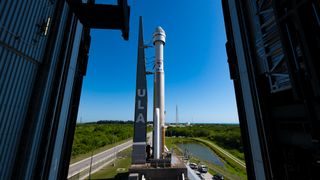
Boeing's Starliner capsule is back at the launch pad.
Starliner and its rocket ride, a United Launch Alliance (ULA) Atlas V, rolled out to the pad at Florida's Cape Canaveral Space Force Station today (May 30) ahead of a planned Saturday (June 1) liftoff.
That launch, at 12:25 p.m. EDT (1625 GMT), will kick off Crew Flight Test (CFT), the first-ever astronaut mission for Starliner and the venerable Atlas V .
Related: 'It's so complicated:' Boeing Starliner teams diagnosing helium leak ahead of June 1 astronaut launch

It was the second trip to the pad in less than a month for the Starliner-Atlas V stack. The duo first made the trip on May 4, ahead of a planned May 6 launch.
That attempt, however, was scrubbed about two hours before liftoff when team members noticed a misbehaving valve in the Atlas V's Centaur upper stage. ULA decided to replace the valve, which required rolling the rocket off the pad and back into a nearby assembly facility.
That process pushed CFT's targeted launch back to May 17. The date shifted further to the right, however, after a slight helium leak was detected in one of the reaction-control thrusters in Starliner's service module.
Get the Space.com Newsletter
Breaking space news, the latest updates on rocket launches, skywatching events and more!
Boeing, NASA and ULA ultimately determined that the helium leak is a minor issue and, after a flight readiness review on Wednesday (May 29), cleared CFT for its June 1 liftoff .

— Boeing's Starliner rolled off launch pad to replace 'buzzing' rocket valve (photo)
— Meet the crew launching on Boeing's 1st Starliner astronaut flight
— 2 astronaut taxis: Why NASA wants both Boeing's Starliner and SpaceX's Dragon
The mission will send NASA astronauts Butch Wilmore and Suni Williams to the International Space Station (ISS) for about seven days. If all goes well, Starliner will be certified to fly operational, six-month crewed missions to and from the orbiting lab for NASA.
Boeing has a contract to do just that, as does SpaceX . Elon Musk's company flew its version of CFT, known as Demo-2, back in 2020 and is now in the middle of its eighth operational crewed mission to the ISS.
CFT will be the third liftoff for Starliner to date. The capsule first launched in December 2019 , on an uncrewed test mission to the ISS that failed to reach its destination. Starliner succeeded on its second try , an uncrewed flight to the orbiting lab in May 2022.
Join our Space Forums to keep talking space on the latest missions, night sky and more! And if you have a news tip, correction or comment, let us know at: [email protected].
Michael Wall is a Senior Space Writer with Space.com and joined the team in 2010. He primarily covers exoplanets, spaceflight and military space, but has been known to dabble in the space art beat. His book about the search for alien life, "Out There," was published on Nov. 13, 2018. Before becoming a science writer, Michael worked as a herpetologist and wildlife biologist. He has a Ph.D. in evolutionary biology from the University of Sydney, Australia, a bachelor's degree from the University of Arizona, and a graduate certificate in science writing from the University of California, Santa Cruz. To find out what his latest project is, you can follow Michael on Twitter.
Boeing's 1st Starliner to carry astronauts arrives at ISS despite thruster malfunction
SpaceX Starship launches on nail-biting 4th test flight of world's most powerful rocket (video, photos)
A billionaire wanted to save the Hubble Telescope — here's why NASA politely declined
- DSyno So it's failed 1 out of 2 tries, and now they're putting humans in it? Reply
DSyno said: So it's failed 1 out of 2 tries, and now they're putting humans in it?
- SX_Junkie Boeing had quite a number of thruster issues as they were attempting to align Strainer for the only docking they accomplished. I agree...the wiser approach would have been to have them do a couple cargo missions before putting humans aboard. Problem is that they only have enough Atlas Vs to complete the minimum contract required crew rotations. Reply
SX_Junkie said: Problem is that they only have enough Atlas Vs to complete the minimum contract required crew rotations.
- DrRaviSharma Just because Boeing does not have Atlas rockets or because NASA can not pay for cargo flights are no excuses to put human astronauts at more than acceptable risk due to unproven (yet not operational) space mission. Combination of mission hardware and systems includes LV + Capsule. These could have been tested separately. Are we seeing a Logical mistake and hope it is not as serious cover up as was Columbia by suppressing information that we proved could have saved most astronauts. Here the story is slightly different as these are ace test pilot astronauts, but we should exhaust most robotic testing before we put astronauts in missions. Let us now compare with Artemis! The situation is also not rosy as they are trying to patch together Shuttle engines and have enough only for a few missions and depend upon new engines at least for future missions. Thus ULA is also a slightly risky path. Perhaps we should give Starship a chance to succeed and use Falcon and Starship combinations in clever ways than to keep reusing some mothballed hardware which has at best sub-optimal provenance! FINALLY GODSPEED TO SUNI Williams AND BUTCH Wilmore! Ravi (Dr. Ravi Sharma, Ph.D. USA) NASA Apollo Achievement Award ISRO Distinguished Service Awards Former MTS NASA HQ MSEB Apollo Former Scientific Secretary ISRO HQ Ontolog Board of Trustees Particle and Space Physics Senior Enterprise Architect SAE Fuel Cell Tech Committee voting member for 20 years. http://www.linkedin.com/in/drravisharma Reply
DrRaviSharma said: Just because Boeing does not have Atlas rockets or because NASA can not pay for cargo flights are no excuses to put human astronauts at more than acceptable risk due to unproven (yet not operational) space mission.
- View All 6 Comments
Most Popular
- 2 Thruster glitches and helium leaks can't stop Boeing's Starliner astronaut test flight — but why are they happening?
- 3 The 'hole' on Mars making headlines could be crucial to Red Planet exploration
- 4 'Most unique tree here:' Artemis Moon Tree planted at US Capitol
- 5 Rocky, carbon-rich exoplanets more likely around tiny stars, James Webb Space Telescope reveals
Why the US can't send humans to Mars
- Humans have long imagined life on Mars , though our understanding of the planet has changed a lot.
- Some of the US's earliest plans assumed humans could reach the Red Planet by the 1980s.
- Over the decades, technology and funding challenges have hampered the nation's hopes of crewed flights.

Earlier this month, NASA announced it was funding a revolutionary high-thrust rocket — called a Pulsed Plasma Rocket — that could make crewed missions to Mars in just two months.
That's seven months faster than it'd take with current technology, and it would drastically reduce the risk and cost of a crewed Mars mission, according to Howe Industries, which is developing the concept. It "holds the potential to revolutionize space exploration," NASA said in a statement.
The PPR is just one of the latest developments in the US's decadeslong discussion to send humans to Mars . In the early '60s, for example, nuclear-bomb-powered spaceships were proposed for the trip.
Since well before NASA landed the first humans on the moon, the US has poured money and time into proposals for a crewed Mars mission , only to see its attempts never leave the ground. But technology isn't the only thing standing in the way. Politics also plays a big role .
"That's kind of like a joke within the space community or the Mars community," Matthew Shindell, a curator with the National Air and Space Museum, told Business Insider. "Putting humans on Mars is always 20 years away."
He said it was short enough to seem tangible but long enough that the political situation would change before it could be realized.
To fully understand why the US hasn't sent humans to Mars despite sending more robots there than any other country, it just takes a trip down memory lane. Here's a history of the US's most promising crewed Martian missions that never were.
1950s: The Mars Project
In the '40s and '50s, no one really knew what they might find on Mars, but they knew getting there would be tricky. One of the first to seriously tackle the problem was Wernher von Braun.
During World War II , von Braun was a member of the Nazi party and created V-2 missiles . After the war, he continued his work on missiles with the US Army as part of Operation Paperclip while also working on a novel called "The Mars Project." In it, he laid out the first detailed plan to send humans to the Red Planet.
He envisioned a 260-day mission that would launch in 1985 with 10 spaceships and 70 crew members. "He sat down and did the math and created a whole story around it," Shindell said.
In the late '50s, von Braun consulted on NASA's very first 10-year plan, which included sending the first probes to Mars. (Sending humans to Mars would come later.) What started as fiction got closer to reality when von Braun started working at NASA a couple of years later.
1960s: Mars by 1965
In the late 1950s, Theodore Taylor, who worked on nuclear weapons at Los Alamos , and the theoretical physicist Freeman Dyson embarked on an ambitious plan to build a nuclear-explosion-powered spaceship.
Named Project Orion, the resulting ship would take 12 years to develop, cost $100 million a year, and comfortably hold 150 people. Their motto was "Mars by 1965, Saturn by 1970." But NASA was concerned about what would happen if any of the hundreds of bombs required to fuel the rocket exploded.
By 1963, the team was having trouble getting increased funding. That same year, the Limited Test Ban Treaty was signed, hampering the team's ability to test its vehicle.
The project was canceled a year later.
1965: Mars' first close-up
Though NASA was feverishly working toward the moon in the '60s, it didn't fully abandon its plans for Mars.
In 1962, the German rocket scientist Ernst Stuhlinger was working at NASA on a project to get five crewed ships to the Red Planet by the early 1980s.
Stuhlinger's planned ships were huge, almost 500 feet long. For comparison, NASA's Space Shuttles are under 200 feet. But as NASA raced to land the first humans on the moon, it shifted focus to smaller, lighter spacecraft. This helped speed things along toward the moon, but it was a step back for Mars.
This pivot "reduced Apollo's utility as a technological stepping stone to Mars," David S. F. Portree wrote in "Humans to Mars: Fifty Years of Mission Planning, 1950-2000."
In the meantime, NASA knew it needed more information about Mars before it landed humans there. So, in 1964, NASA's Jet Propulsion Laboratory launched the very first probe to fly by Mars: Mariner 4 .
The images the probe transmitted to Earth were fuzzy and showed a desolate, barren planet. But they were the first close-up images of Mars's surface that anyone on Earth had seen.
1970s: The post-Apollo plans
NASA had just landed the first people on the moon in 1969 as part of its Apollo Program and was ready for the next big step. That same year, a Space Task Group appointed by President Richard Nixon issued a report that supported human flights to Mars in 1982.
But Nixon ignored most of the 1969 report's suggestions in favor of what would become the Space Shuttle program , which didn't involve going to Mars. It was a turning point for NASA.
During the height of the Apollo era, NASA didn't have to compete for funding, Shindell said. Now, Nixon's administration started cutting its budget.
This was during the Vietnam War , and many Americans wanted the government to focus on poverty, the environment, and other domestic issues.
"If you're a proponent of human Mars exploration, this is the problem you've faced ever since the 1970s," Shindell said. Sending humans to the moon was already incredibly expensive, and it's a lot closer than Mars.
1980s: Sally Ride's report
In 1985, President Ronald Reagan appointed the National Commission on Space to envision the next 50 years of space travel, which involved the possibility of piloted vehicles to Mars.
But then NASA's Space Shuttle Challenger exploded. The disaster affected how the agency thought about human space travel as a whole.
"In general, there was a great deal of soul-searching within NASA about the use of expensive and risky human-rated launch vehicles like the shuttle," William Sheehan and Jim Bell wrote in "Discovering Mars: A History of Observation and Exploration of the Red Planet."
Just a year later, though, NASA's administrator tasked the astronaut Sally Ride with laying out the agency's future space explorations. In her report, she explained what it would take for the US to land an astronaut on Mars by 2005.
To meet that timeline, NASA would need to triple its current budget in the next decade. That didn't happen.
1989: 20 years to Mars
By 1989, a crewed mission to Mars seemed back on the table, according to a speech by the newly elected president, George H.W. Bush.
" Why Mars?" he asked. "Because it is humanity's destiny to strive, to seek, to find. And because it is America's destiny to lead."
NASA's response was the Space Exploration Initiative, an analysis of Bush's space-exploration goals, which would cost an estimated $400 billion to $500 billion.
At that point, Mars was still a long way off. The missions weren't expected to begin until after 2010.
But Sheehan and Bell said a lack of congressional funding and political support led to the demise of Bush's Martian mission a few years later in 1993.
1990s: "Better, faster, cheaper"
By the 1990s, Mars enthusiasts were dreaming of getting humans there by the end of the millennium. The aerospace engineer Robert Zubrin formed the Mars Society, an advocacy group pushing for the planet's exploration and eventually establishing a human settlement there.
NASA was meanwhile trying to figure out how to study Mars after losing contact with the robotic probe Mars Observer in 1993. With so much still unknown about the planet, uncrewed missions continued to be the focus.
The agency's new administrator, Daniel Goldin, was pursuing a new mantra for the robotic missions: "better, faster, cheaper."
This decade saw success with the uncrewed Pathfinder and Mars Global Surveyor missions. Pathfinder delivered Sojourner, the first operational Mars rover, while MGS sent back incredible images and data from the planet .
Just a couple of years later, though, NASA lost two more uncrewed spacecraft, the Mars Polar Lander and the Mars Climate Orbiter.
2000s: But first, the moon
Despite the setbacks of the Polar Lander and MCO, NASA again had success in 2004 with rovers Spirit and Opportunity .
Though NASA had recently suffered another tragedy with the loss of the Space Shuttle Columbia and its crew in 2003, the agency's rovers seemed to reignite some of the desire for human missions to Mars.
In 2004, 15 years after his father's space speech, President George W. Bush announced what would become the Constellation Program. The ultimate goal was to put people on Mars, though there was no exact date given for this part of the plan.
A large part of Bush's vision involved returning to the moon before heading to the Red Planet. In 2010, President Barack Obama canceled Constellation but set a timeline of getting astronauts to Mars by the 2030s.
2010s: Mars goes commercial
In the 2010s, private space companies — such as SpaceX — started planning projects to get crews to Mars.
SpaceX's founder, Elon Musk, said in 2016 that he'd get people there in less than a decade . He later revised the date to 2029 with robust colonization by 2050.
So far, SpaceX hasn't sent anything to Mars.
President Donald Trump meanwhile reversed the Obama administration's space-exploration plans. NASA was again planning for a moon-first agenda .
Established in 2017 under the Trump Administration, NASA's Artemis Program is its latest and current mission for crewed deep-space exploration. It aims to return humans to the moon and create a lunar space station where astronauts can live for weeks or months at a time.
But this moon-first agenda doesn't completely rule out Mars. Dayna Ise, who leads NASA's Mars Campaign Office, said it would actually help us get to the Red Planet.
"You learn a lot by going to the moon, but you learn even more by staying at the moon," she said. "And so whatever we learn there will help with Mars."
She also said private space companies had a role to play. "It's all hands on deck," she said. "It is such a difficult engineering problem that we cannot exclude anybody from helping."
2020s: Simulating life on Mars
The private space companies have been busy this decade. This year, SpaceX had its first mostly successful Starship launch after several fiery attempts. The mega-rocket is set to play a huge role in Musk's plans to colonize Mars.
The Biden Administration has meanwhile continued to support the Artemis lunar missions. There have been a few setbacks, though.
Citing safety and technical challenges, NASA recently pushed back its first crewed Artemis mission to the moon, which is now scheduled for 2025.
Artemis IV, NASA's mission to deliver part of a lunar space station to the moon, is still scheduled for 2028.
Ise said having a long-term presence on the moon would help experts learn more about how crews could survive on a different world for longer than a few days.
The agency is also studying how people will fare in isolation. NASA's CHAPEA missions put volunteers in a simulated Mars habitat for a year. The "analog astronauts" follow strict schedules, have limited contact with loved ones, and are closely monitored. The first crew is set to emerge from the habitat this year on July 6.
2030s and beyond: Getting humans to Mars
Despite its moon-first agenda, NASA knows Mars has its own challenges that the lunar surface can't prepare them for. In addition to taking a lot of time and fuel to get there, the trip is expected to result in communication delays of at least 20 minutes between the crew and Earth.
Ise said the travelers would need to be able to take care of their own health emergencies and fix hardware issues. But NASA is also working on making some systems more autonomous . "If there is an issue, they don't have time to troubleshoot with someone on the ground to fix their life support system," she said. "So we need those life support systems to be smarter."
Other problems include keeping the crew safe from radiation, dealing with the planet's skin-irritating dust, and developing a food source . "We have to build an ecology inside a transit vehicle to keep everyone alive and healthy," Ise said.
All that will take time. NASA's administrator, Bill Nelson, has said there's potential for the agency to send humans to Mars by 2040 . Ise compared it to eating an entire elephant. "We're doing it one bite at a time and building on everything that we learn," she said.
It remains to be seen whether private US companies will reach Mars first.
Correction — May 28, 2024: An earlier version of this story misstated Virgin Galactic's space exploration goals. Virgin Galactic has not announced plans to send robots or humans to Mars.
- Main content

Origins, Spectral Interpretation, Resource Identification, and Security – Regolith Explorer
Frequently asked questions
2023 Sample Delivery updates
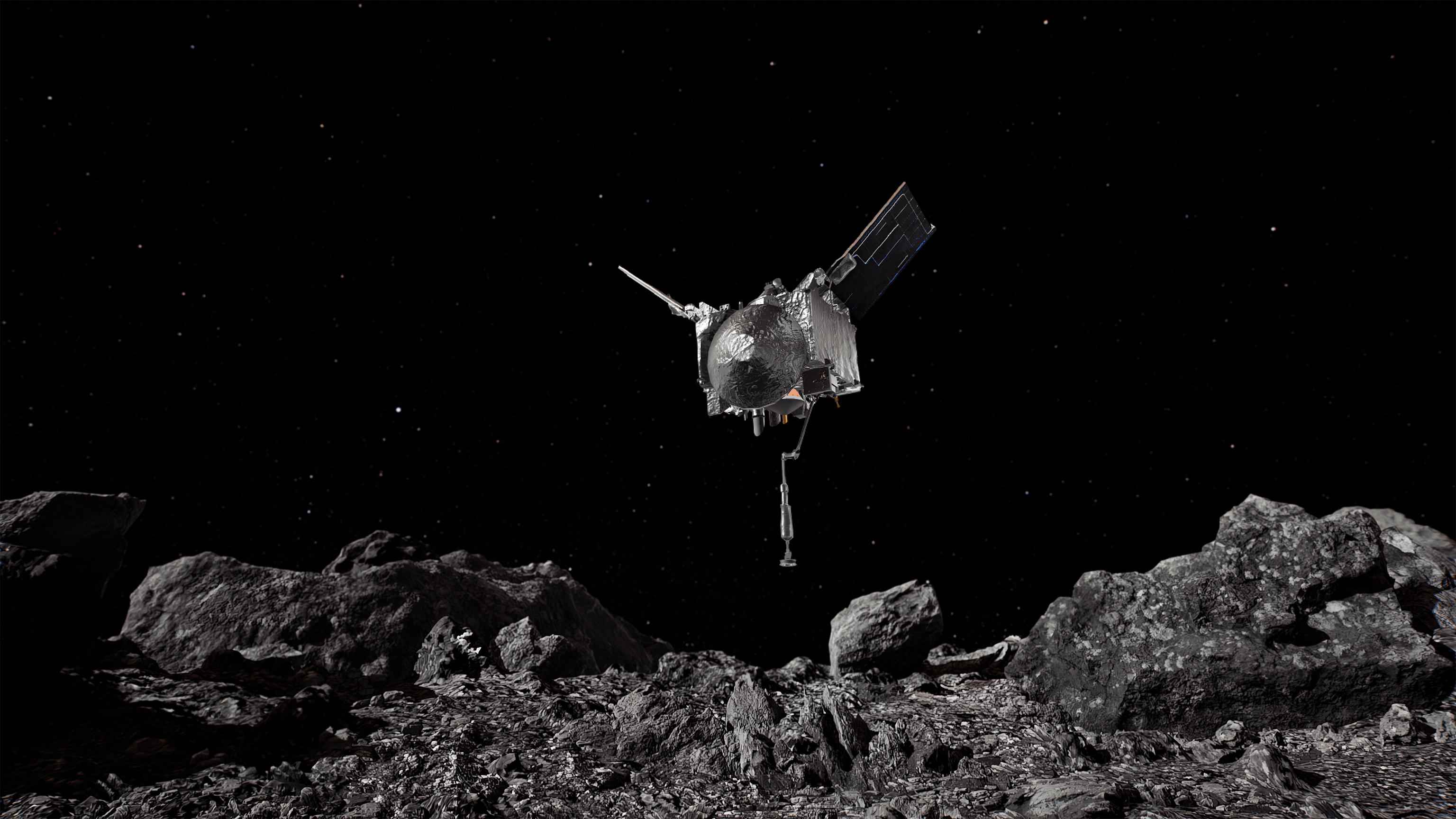
OSIRIS-REx is the first U.S. mission to collect a sample from an asteroid. It returned to Earth on Sept. 24, 2023, to drop off material from asteroid Bennu. The spacecraft didn't land, but continued on to a new mission, OSIRIS-APEX, to explore asteroid Apophis. Meanwhile, scientists hope the Bennu sample OSIRIS-REx dropped into the Utah desert will offer clues to whether asteroids colliding with Earth billions of years ago brought water and other key ingredients for life here.
Mission Type
Destination
sample DELIVERED
Launched on Sept. 8, 2016, the Origins, Spectral Interpretation, Resource Identification, and Security-Regolith Explorer, or OSIRIS-REx, spacecraft traveled to a near-Earth asteroid named Bennu (formerly 1999 RQ36) and collected a sample of rocks and dust from the surface.
The spacecraft delivered the sample to Earth on Sept. 24, 2023. It released the capsule holding pieces of Bennu over Earth’s atmosphere. The capsule parachuted to the Department of Defense's Utah Test and Training Range, where the OSIRIS-REx team was waiting to retrieve it.
This mission will help scientists investigate how planets formed and how life began, as well as improve our understanding of asteroids that could impact Earth.
OSIRIS-REx Blog
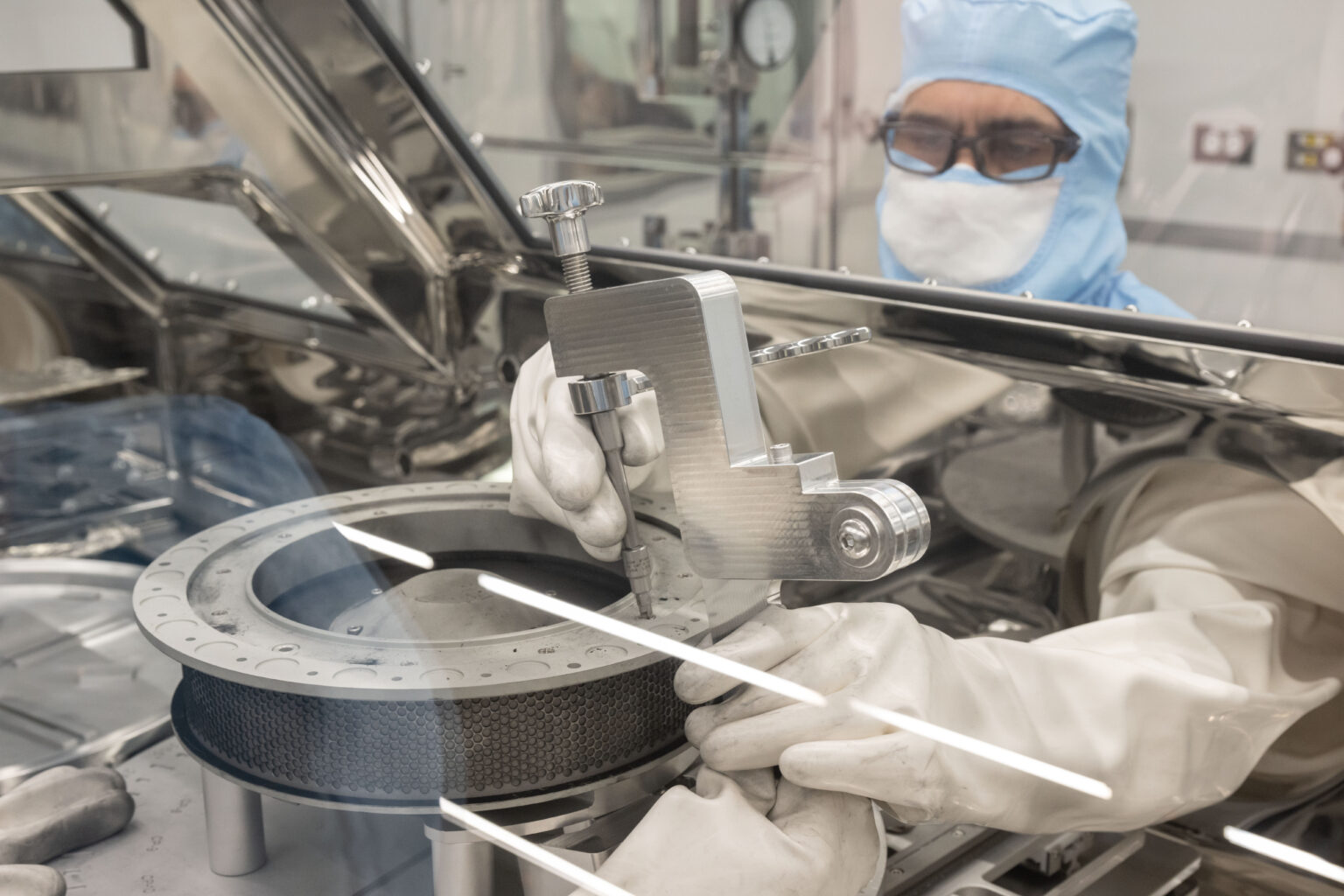
NASA’s OSIRIS-REx Team Clears Hurdle to Access Remaining Bennu Sample
Curation team members at NASA’s Johnson Space Center in Houston have successfully removed the two fasteners from the sampler head that had prevented the remainder of OSIRIS-REx’s asteroid Bennu sample material from being accessed.
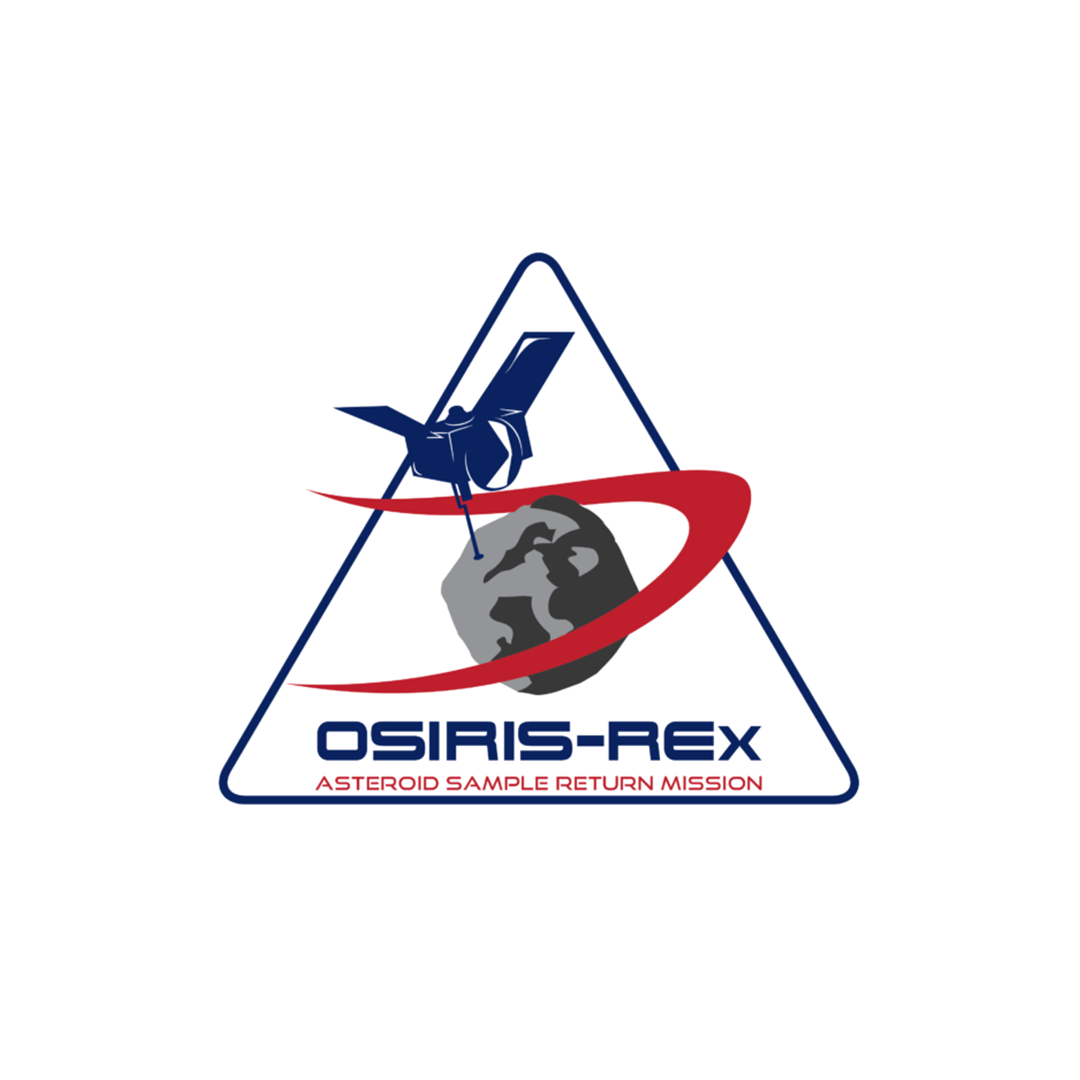
NASA’s OSIRIS-REx Achieves Sample Mass Milestone
The curation team processing NASA’s asteroid Bennu sample has removed and collected 2.48 ounces (70.3 grams) of rocks and dust from the sampler hardware – surpassing the agency’s goal of bringing at least 60 grams to Earth.
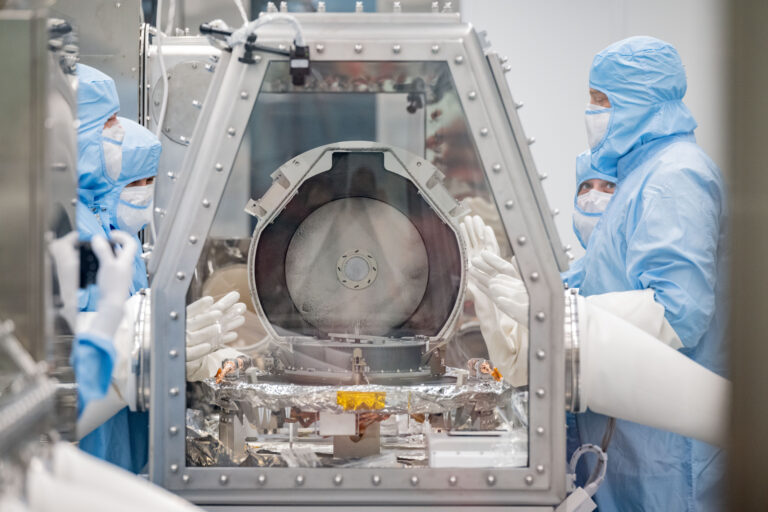
Initial Curation of NASA’s OSIRIS-REx Sample
The initial curation process for NASA’s OSIRIS-REx sample of asteroid Bennu is moving slower than anticipated, but for the best reason: the sample runneth over.
OSIRIS-REx Sample Landing
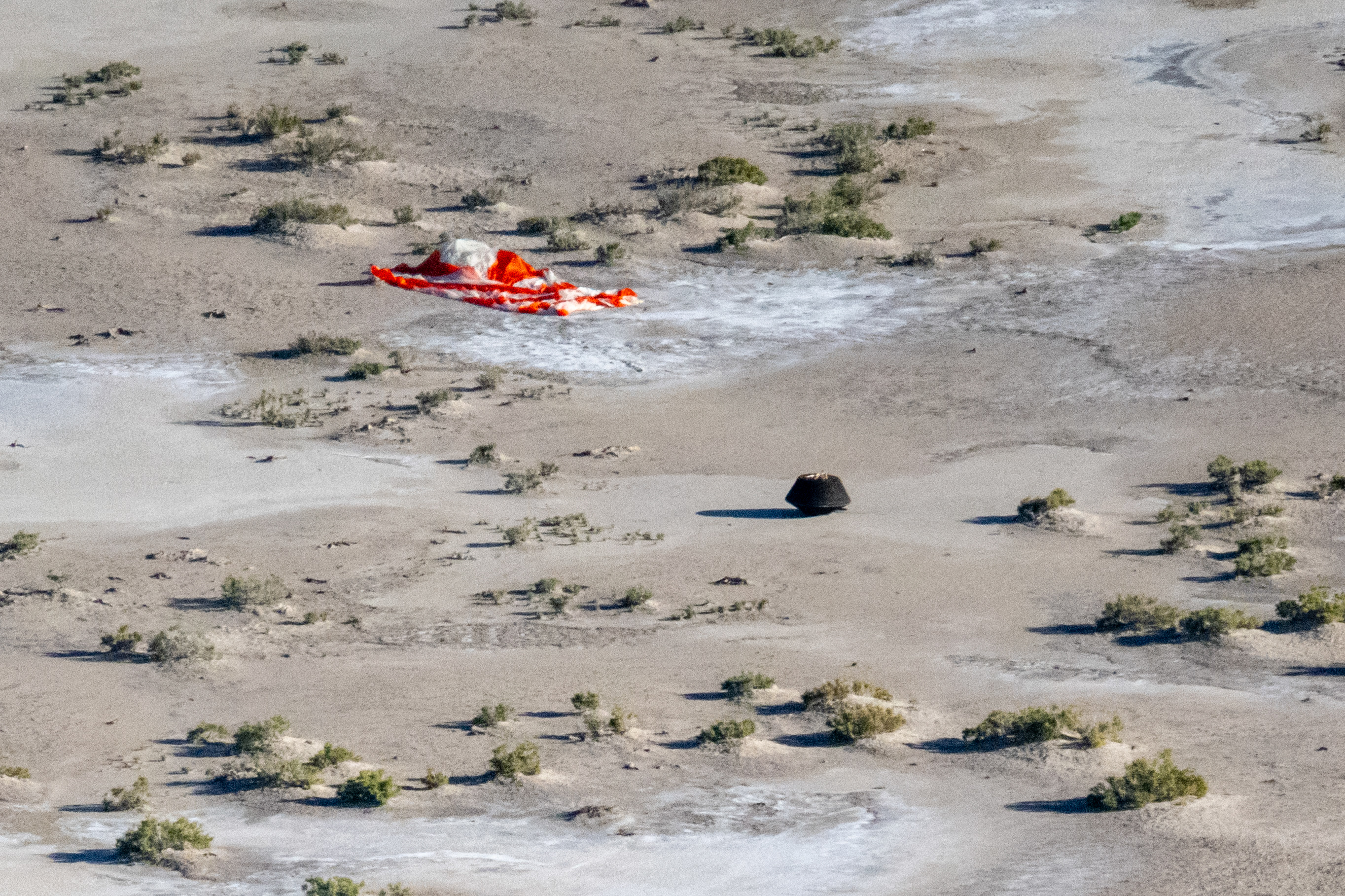
OSIRIS-REx News
NASA’s OSIRIS-REx Earns Neil Armstrong Space Flight Achievement Award
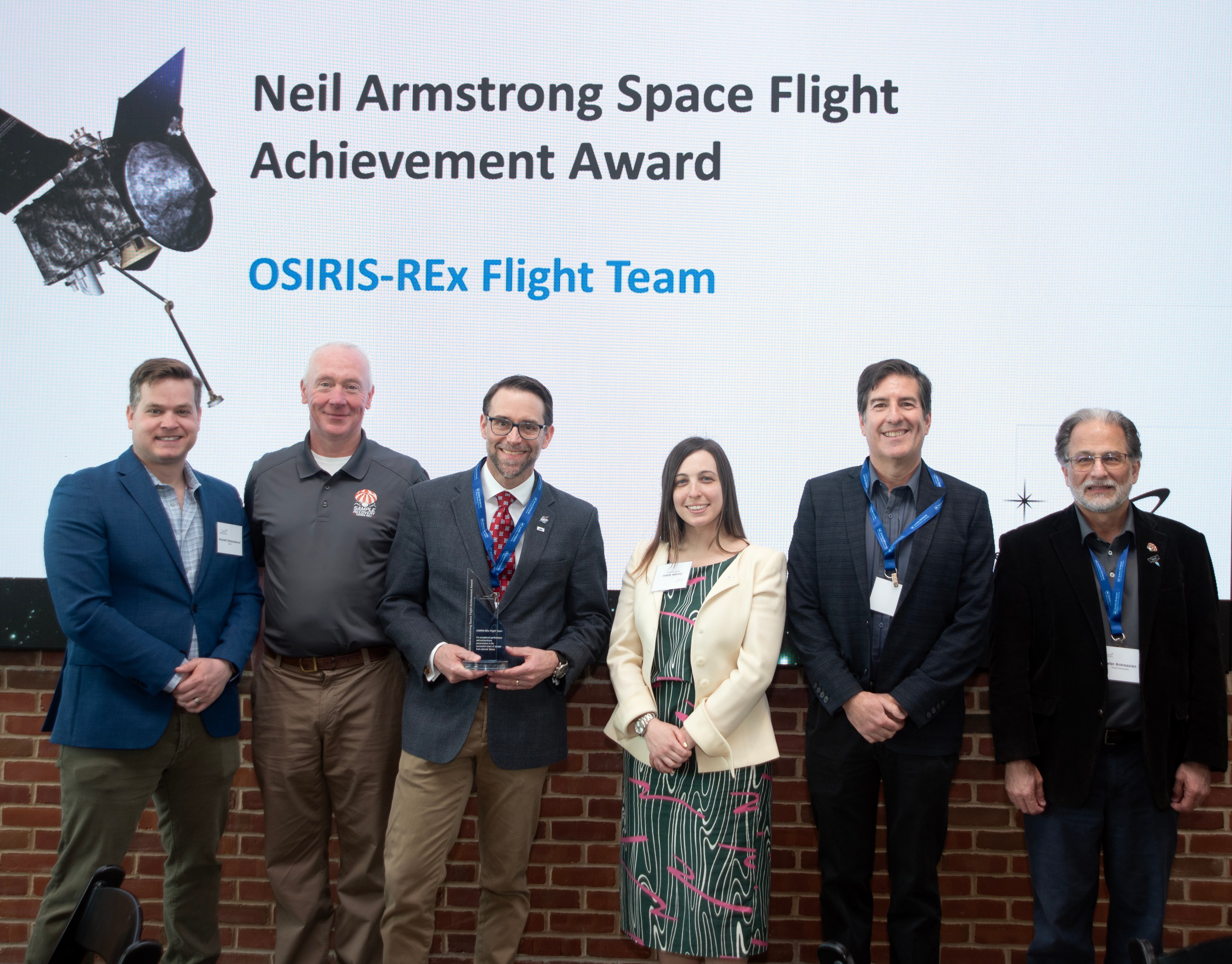
NASA’s OSIRIS-REx Mission Awarded Collier Trophy
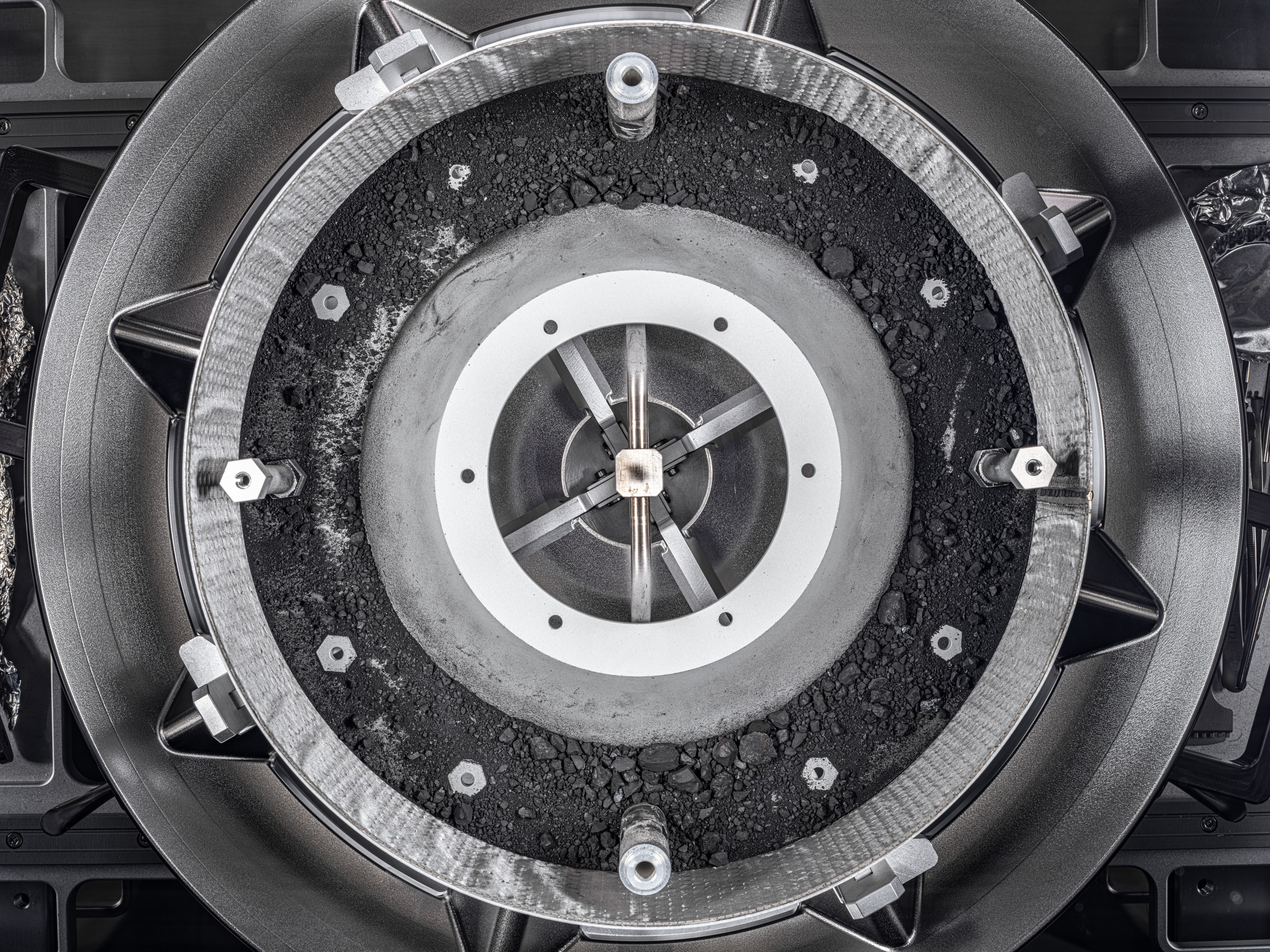
NASA’s OSIRIS-REx Mission Awarded Robert Goddard Memorial Trophy
NASA’S OSIRIS-REx Curation Team Reveals Remaining Asteroid Sample
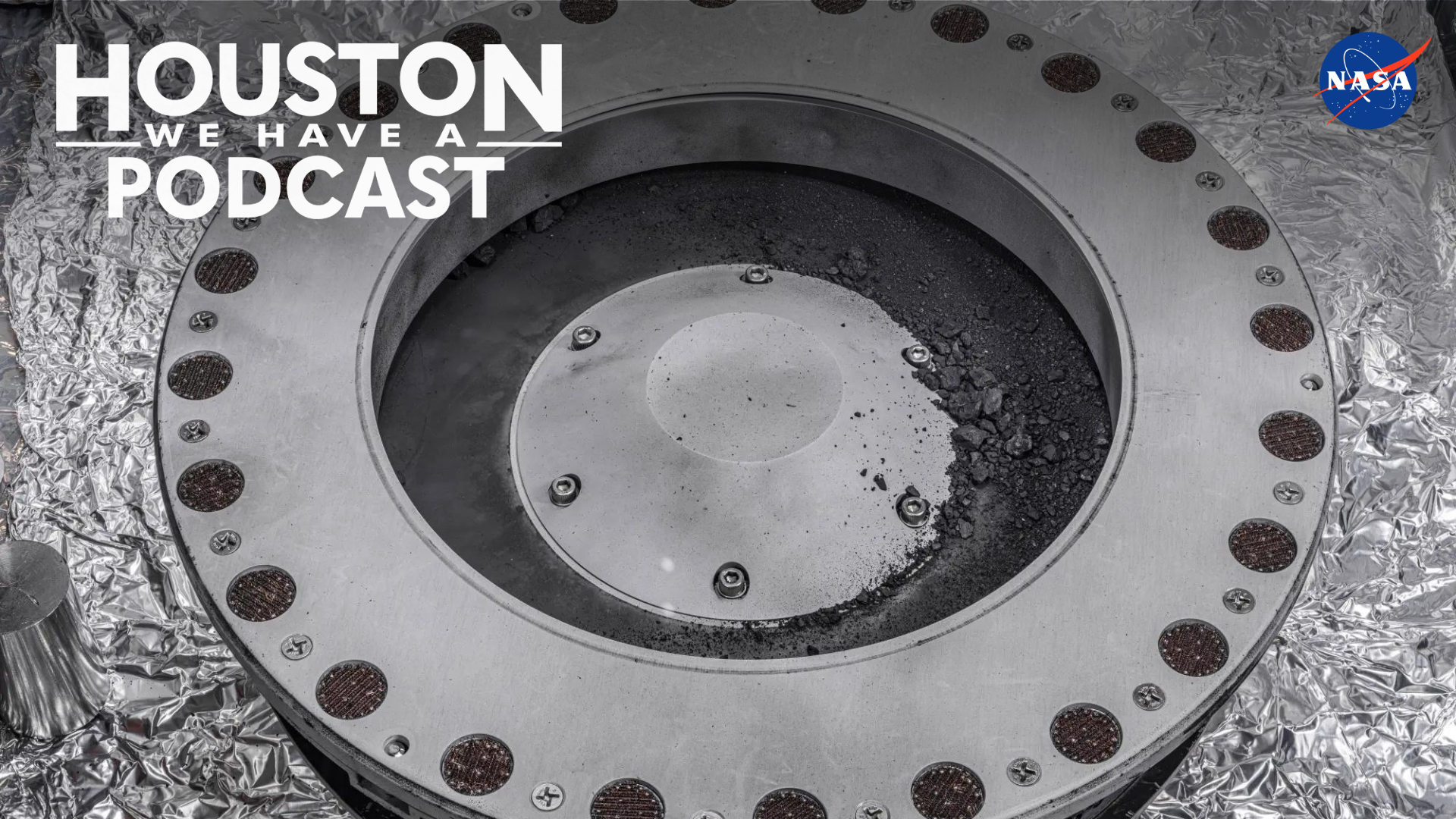
Return of OREx: Part III
To view more images from the Sept. 24, 2023, asteroid sample arrival in Utah, visit NASA's OSIRIS-REx Flickr gallery .
Explore OSIRIS-APEX
OSIRIS-APEX, a follow-on to OSIRIS-REx, will study the physical changes to asteroid Apophis after the asteroid’s rare close encounter with Earth in 2029.
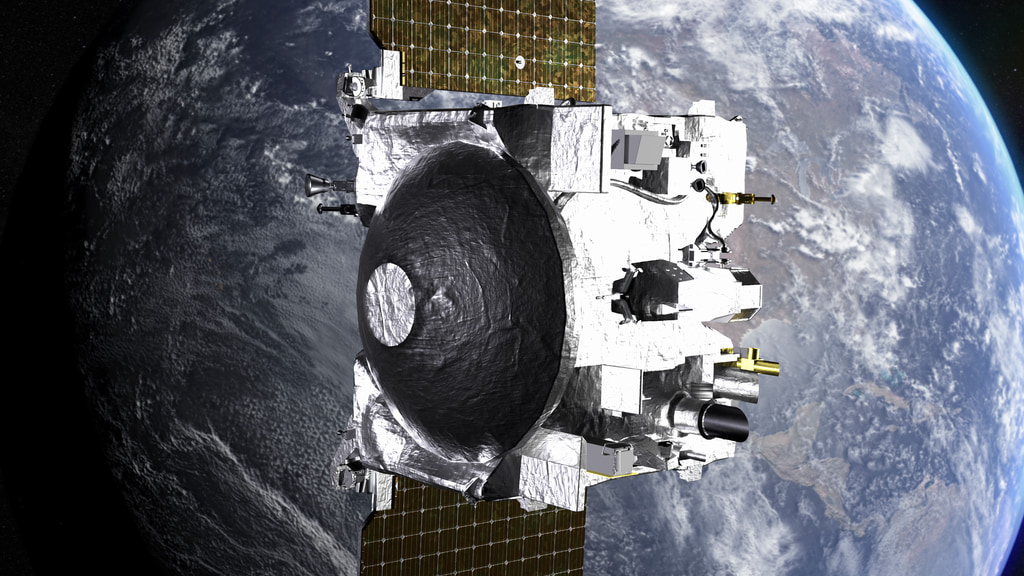
Discover More Topics From NASA
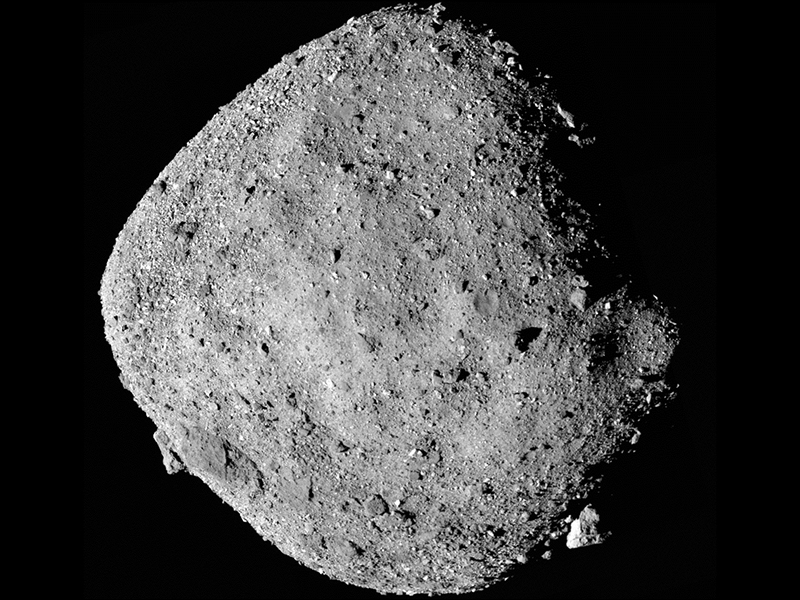
Our Solar System

Science Missions
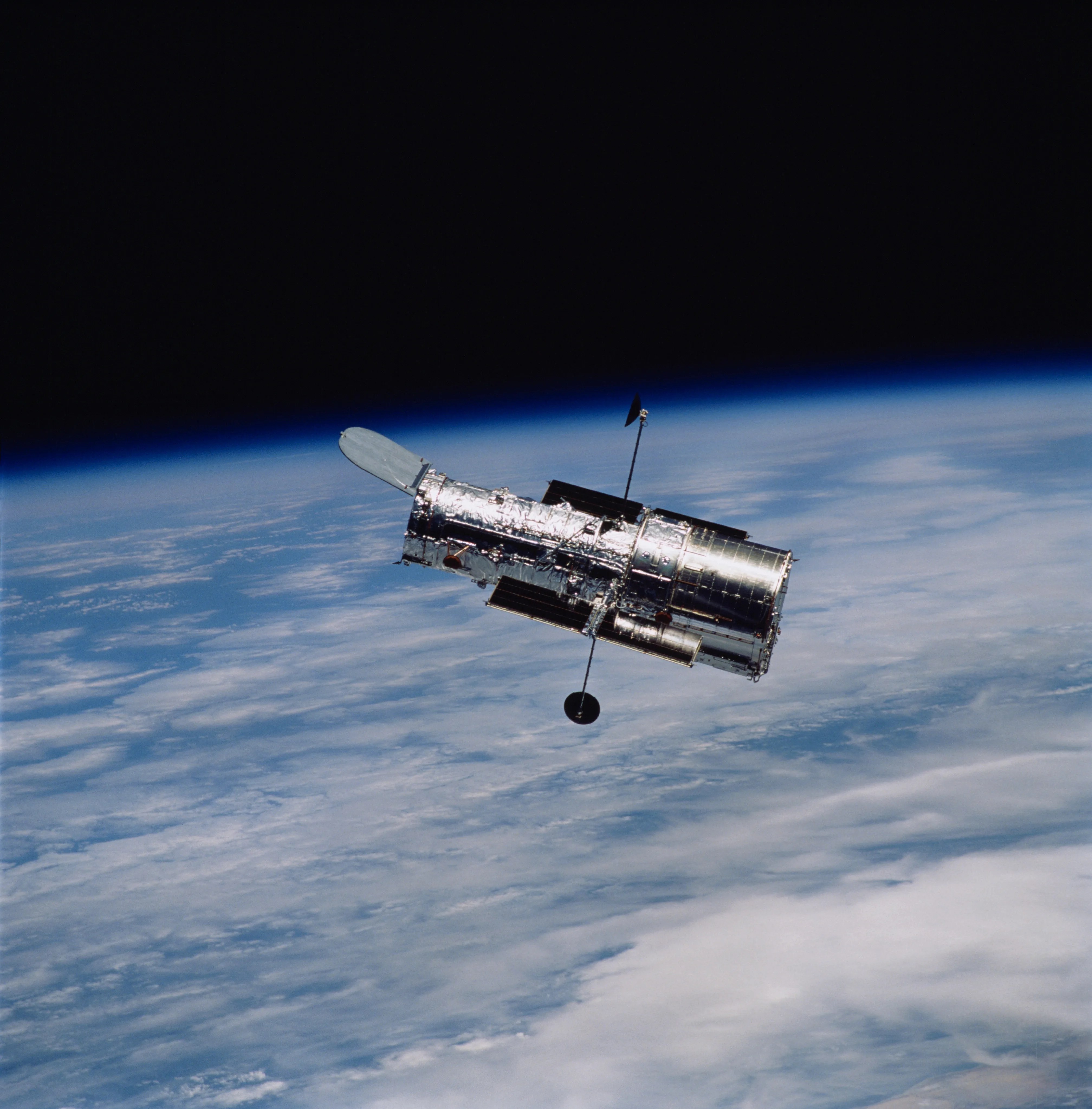
What to Know About Boeing's First Spaceflight Carrying NASA Astronauts
Boeing has finally launched NASA astronauts to the International Space Station after years of stumbles and delays
What to Know About Boeing's First Spaceflight Carrying NASA Astronauts

Chris O'Meara
NASA astronauts Suni Williams, left, and Butch Wilmore pose for a photo after leaving the operations and checkout building for a trip to launch pad at Space Launch Complex 41 Wednesday, June 5, 2024, in Cape Canaveral, Fla. The two astronauts are scheduled to liftoff later today on the Boeing Starliner capsule for a trip to the international space station. (AP Photo/Chris O'Meara)
CAPE CANAVERAL, Fla. (AP) — After years of stumbles and delays, Boeing has finally launched astronauts to the International Space Station for NASA.
It’s the first flight of Boeing’s Starliner capsule with a crew on board, a pair of NASA pilots who will check out the spacecraft during the test drive and a weeklong stay at the space station.
NASA turned to U.S. companies for astronaut rides after the space shuttles were retired. Elon Musk's SpaceX has made nine taxi trips for NASA since 2020, while Boeing has managed only a pair of empty test flights.
Provided this tryout goes well, NASA will alternate between Boeing and SpaceX to get astronauts to and from the space station.
A look at the newest ride and its shakedown cruise:
THE CAPSULE
White with black and blue trim, Boeing's Starliner capsule is about 10 feet (3 meters) tall and 15 feet (4.5 meters) in diameter. It can fit up to seven people, though NASA crews typically will number four. The company settled on the name Starliner nearly a decade ago, a twist on the name of Boeing’s early Stratoliner and the current Dreamliner planes.
No one was aboard Boeing’s two previous Starliner test flights. The first, in 2019, was hit with software trouble so severe that its empty capsule couldn’t reach the station until the second try in 2022. Then last summer, weak parachutes and flammable tape cropped up that needed to be fixed or removed. Wednesday's launch was the third try with astronauts; two earlier countdowns were scuttled by rocket-related issues.
Veteran NASA astronauts Butch Wilmore and Suni Williams are retired Navy captains who spent months aboard the space station years ago. They joined the test flight after the original crew bowed out as the delays piled up. Wilmore, 61, is a former combat pilot from Mount Juliet, Tennessee , and Williams, 58, is a helicopter pilot from Needham, Massachusetts.
THE TEST FLIGHT
Starliner blasted off on United Launch Alliance’s Atlas V rocket from Cape Canaveral Space Force Station. It's the first time astronauts have ridden an Atlas since NASA’s Project Mercury, starting with John Glenn when he became the first American to orbit the Earth in 1962. Now 62 years later, Wednesday's launch was the 100th for the top-of-the-line Atlas V, which is used to hoist satellites as well as spacecraft. ULA is a joint venture of Boeing and Lockheed Martin.
Starliner should reach the space station with its seven residents on Thursday. Starliner will remain docked for just over a week, undergoing checkouts before landing in the American West.
STARLINER VS. DRAGON
Both Boeing and SpaceX's capsules are designed to be autonomous and reusable. This Starliner is the same one that made the first test flight in 2019. Unlike the SpaceX Dragons, Starliner has traditional hand controls and switches alongside touchscreens and, according to the astronauts, is more like NASA’s Orion capsules for moon missions. Plans called for Wilmore and Williams to briefly take manual control to test out the systems on their way to the space station.
NASA gave Boeing, a longtime space contractor, more than $4 billion to develop the capsule, while SpaceX got $2.6 billion. SpaceX already was delivering supplies to the space station, and merely refashioned its cargo capsule for crew. While SpaceX uses the boss' Teslas to get astronauts to the launch pad, Boeing has a more traditional “astrovan.”
One big difference at flight’s end: Starliner lands on the ground with cushioning airbags, while Dragon splashes into the sea.
Boeing is committed to six Starliner trips for NASA after this one, which will take the company to the station’s planned end in 2030. Boeing has said a fifth seat will be available to private clients. SpaceX periodically sells seats to tycoons and even countries eager to get their citizens to the station for a couple weeks, but these rides are separate from NASA's dedicated six-month missions.
Coming soon: Sierra Space’s mini shuttle, Dream Chaser, which will attempt to deliver cargo to the station later this year, before accepting passengers. It is due to launch on ULA's new Vulcan rocket, the eventual successor to the Atlas V.
The Associated Press Health and Science Department receives support from the Howard Hughes Medical Institute’s Science and Educational Media Group. The AP is solely responsible for all content.
Copyright 2024 The Associated Press . All rights reserved. This material may not be published, broadcast, rewritten or redistributed.
Photos You Should See - May 2024

Join the Conversation
Tags: Associated Press , business , science , Florida
Related Articles
America 2024

Best States

Best States Rankings
- # 2 New Hampshire
- # 3 Nebraska
- # 4 Minnesota
Health News Bulletin
Stay informed on the latest news on health and COVID-19 from the editors at U.S. News & World Report.
Sign in to manage your newsletters »
Sign up to receive the latest updates from U.S News & World Report and our trusted partners and sponsors. By clicking submit, you are agreeing to our Terms and Conditions & Privacy Policy .
You May Also Like
The 10 best states in america.
Elliott Davis Jr. May 7, 2024

Why Utah Is the Best State
Elliott Davis Jr. and Julia Haines May 7, 2024

Why Florida Is No. 1 in Education
Tim Smart May 7, 2024

Scorching Heat Keeps Grip on Southwest US as Records Tumble and More Triple Digits Forecast
Associated Press June 7, 2024

Hundreds of Asylum-Seekers Are Camped Out Near Seattle. There's a Vacant Motel Next Door

The Prosecution Is Wrapping up in Hunter Biden's Gun Trial. There Are 2 More Witnesses Expected

James Beard Finalists Include an East African Restaurant in Detroit and Seattle Pho Shops

Records Tumble in Southwest US as Temperatures Soar Well Into Triple Digits and 122 in Death Valley
Associated Press June 6, 2024

Judge Dismisses Native American Challenge to $10B SunZia Energy Transmission Project in Arizona

Possibility of Ranked-Choice Voting in Colorado Faces a Hurdle With New Law


IMAGES
VIDEO
COMMENTS
Yuri Alekseyevich Gagarin (9 March 1934 - 27 March 1968) was a Soviet pilot and cosmonaut who, aboard the first successful crewed spaceflight, became the first human to journey into outer space.Travelling on Vostok 1, Gagarin completed one orbit of Earth on 12 April 1961, with his flight taking 108 minutes. By achieving this major milestone for the Soviet Union amidst the Space Race, he ...
Yuri Gagarin (born March 9, 1934, near Gzhatsk, Russia, U.S.S.R. [now Gagarin, Russia]—died March 27, 1968, near Moscow) was a Soviet cosmonaut who in 1961 became the first man to travel into space. The son of a carpenter on a collective farm, Gagarin graduated as a molder from a trade school near Moscow in 1951.
In addition to launching the first artificial satellite, the first dog in space, and the first human in space, the Soviet Union achieved other space milestones ahead of the United States. These milestones included Luna 2, which became the first human-made object to hit the Moon in 1959. Soon after that, the U.S.S.R. launched Luna 3.
NASA. Apr 01, 1961. Image Article. Yuri Gagarin from the Soviet Union was the first human in space. His vehicle, Vostok 1 circled Earth at a speed of 27,400 kilometers per hour with the flight lasting 108 minutes. Vostok's reentry was controlled by a computer. Unlike the early US human spaceflight programs, Gagarin did not land inside of capsule.
On April 12, 1961, aboard the spacecraft Vostok 1, Soviet cosmonaut Yuri Alekseyevich Gagarin becomes the first human being to travel into space. During the flight, the 27-year-old test pilot and ...
Background The number of spacewalks required to construct the International Space Station dwarfed the then existing experience base for this activity, a hurdle called the "Wall of EVA." Description of a space station in Hermann Noordung's The Problem of Space Travel (1929).. At the beginning of the 20th century, there was a burst of scientific investigation into interplanetary travel, inspired ...
Yuri Gagarin, the first man in space, during his visit to France in 1963. Credit: Ria Novosti But perhaps the most notable thing about Gagarin, for which he is remembered most fondly, is his smile.
Space exploration - Milestones, Achievements, History: The first artificial Earth satellite, Sputnik 1, was launched by the Soviet Union on October 4, 1957. The first human to go into space, Yuri Gagarin, was launched, again by the Soviet Union, for a one-orbit journey around Earth on April 12, 1961. Within 10 years of that first human flight, American astronauts walked on the surface of the Moon.
History of Space Travel. Learn about the history of humans traveling into space. The first earthling to orbit our planet was just two years old, plucked from the streets of Moscow barely more than a week before her historic launch. Her name was Laika. She was a terrier mutt and by all accounts a good dog. Her 1957 flight paved the way for space ...
space elevator. space exploration, investigation, by means of crewed and uncrewed spacecraft, of the reaches of the universe beyond Earth 's atmosphere and the use of the information so gained to increase knowledge of the cosmos and benefit humanity. A complete list of all crewed spaceflights, with details on each mission's accomplishments ...
First space station. Salyut 1 was the first space station of any kind, launched into low Earth orbit by the Soviet Union on 19 April 1971. ... The Apollo 17 mission in 1972 marked the sixth landing and the most recent human visit. Artemis 2 is scheduled to complete a crewed flyby of the Moon in 2025, ...
American businessman Dennis Tito, the world's first orbital space tourist, is seen training for his historic 2001 flight to the International Space Station. Tito launched in April 2001 aboard a ...
Space exploration unites the world to inspire the next generation, make ground-breaking discoveries, and create new opportunities. Technologies and missions we develop for human spaceflight have thousands of applications on Earth, boosting the economy, creating new career paths, and advancing everyday technologies all around us.
CNN —. On April 30, 2001, US millionaire Dennis Tito arrived at the International Space Station (ISS) via a Russian Soyuz rocket, becoming the world's first space tourist. For Tito, then 60 ...
Timeline of the 1969 Moon Landing. At 9:32 a.m. EDT on July 16, with the world watching, Apollo 11 took off from Kennedy Space Center with astronauts Neil Armstrong, Buzz Aldrin and Michael ...
The first spacecraft to visit Mercury was NASA's Mariner 10, which imaged about 45% of the surface. NASA's MESSENGER spacecraft flew by Mercury three times and orbited the planet for four years before crashing on its surface at the end of its mission. The European Space Agency and JAXA launched a joint mission to Mercury in 2018.
13 Things Tourists Should Know Before Traveling to Space, According to Astronauts. We asked the pros for their best tips on handling a first trip to space.
Space tourism once seemed like an idea for the distant future, but with the world's first space hotel set to open in 2027 and companies like SpaceX, Blue Origin, and Virgin Galactic vying to make ...
The first vertebrates sent into space were a series of ill-fated monkeys and mice launched between 1948 and 1951 by American researchers. On June 14, 1949, a Rhesus monkey named Albert II blasted ...
On January 31, 1961, Ham, whose name was an acronym for Holloman Aero Med, became the first chimpanzee in space, aboard the Mercury Redstone rocket on a sub-orbital flight very similar to Alan Shepard's. Ham was brought from the French Camaroons, West Africa, where he was born July 1957, to Holloman Air Force Base in New Mexico in 1959. ...
3. SpaceX. Last in our trio of serious contenders for firms that will take your money and send you into space in the next few years is SpaceX. SpaceX is owned by Elon Musk, who is particularly famous for being the CEO and co-founder of Tesla Inc, the electric car and battery manufacturer, amongst other things.
It's a space launch day and those always make me so giddy! Here's what's happening: Boeing just successfully launched its first manned mission to space. Scroll down for the video of the ...
SpaceX's Starship megarocket completed a high-stakes fourth test flight. Both the Starship spacecraft and the rocket's first-stage, known as Super Heavy, survived the fiery trip back through ...
Expedition 1 was the first long-duration stay on the International Space Station (ISS). The three-person crew stayed aboard the station for 136 days, from November 2000 to March 2001. It was the beginning of an uninterrupted human presence on the station which continues as of 2024. Expedition 2, which also had three crew members, immediately ...
Boeing's Starliner capsule is back at the launch pad. Starliner and its rocket ride, a United Launch Alliance (ULA) Atlas V, rolled out to the pad at Florida's Cape Canaveral Space Force Station ...
In the 2010s, private space companies — such as SpaceX — started planning projects to get crews to Mars. SpaceX's founder, Elon Musk, said in 2016 that he'd get people there in less than a ...
OSIRIS-REx is the first U.S. mission to collect a sample from an asteroid. It returned to Earth on Sept. 24, 2023, to drop off material from asteroid Bennu. The spacecraft didn't land, but continued on to a new mission, OSIRIS-APEX, to explore asteroid Apophis. Meanwhile, scientists hope the Bennu sample OSIRIS-REx dropped into the Utah desert ...
Chris O'Meara. NASA astronauts Suni Williams, left, and Butch Wilmore pose for a photo after leaving the operations and checkout building for a trip to launch pad at Space Launch Complex 41 ...